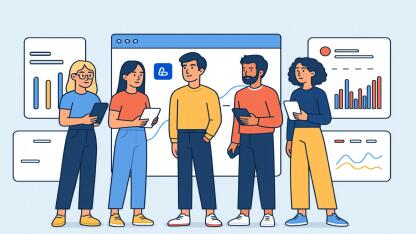You invest time and resources into creating content, but the backlinks just aren’t coming? The problem may not be how much you publish, but what you're publishing.
The internet is flooded with content no one wants to reference. Why? Because it offers little to no real value for its intended audience.
So if your site isn't getting links, it might simply be that there’s nothing worth linking to.
Sounds harsh? – Yes.
But is it true? – Also, yes.
In the world of SEO, those who win are the ones who create more than just content - they build real linkable assets. These pages don’t rely on cold outreach or persuasion. People want to link to them.
These types of pages are commonly referred to as linkable assets - high-value content specifically designed to attract backlinks naturally. Whether you think of them the idea remains the same: these are pages with high potential for natural exposure. They earn mentions, attract organic backlinks, and inspire people to share them.
In this article, you’ll learn which types of linkable assets perform best, how to create them effectively, and how to turn them into a reliable source of backlinks over time.
What Are Linkable Assets?
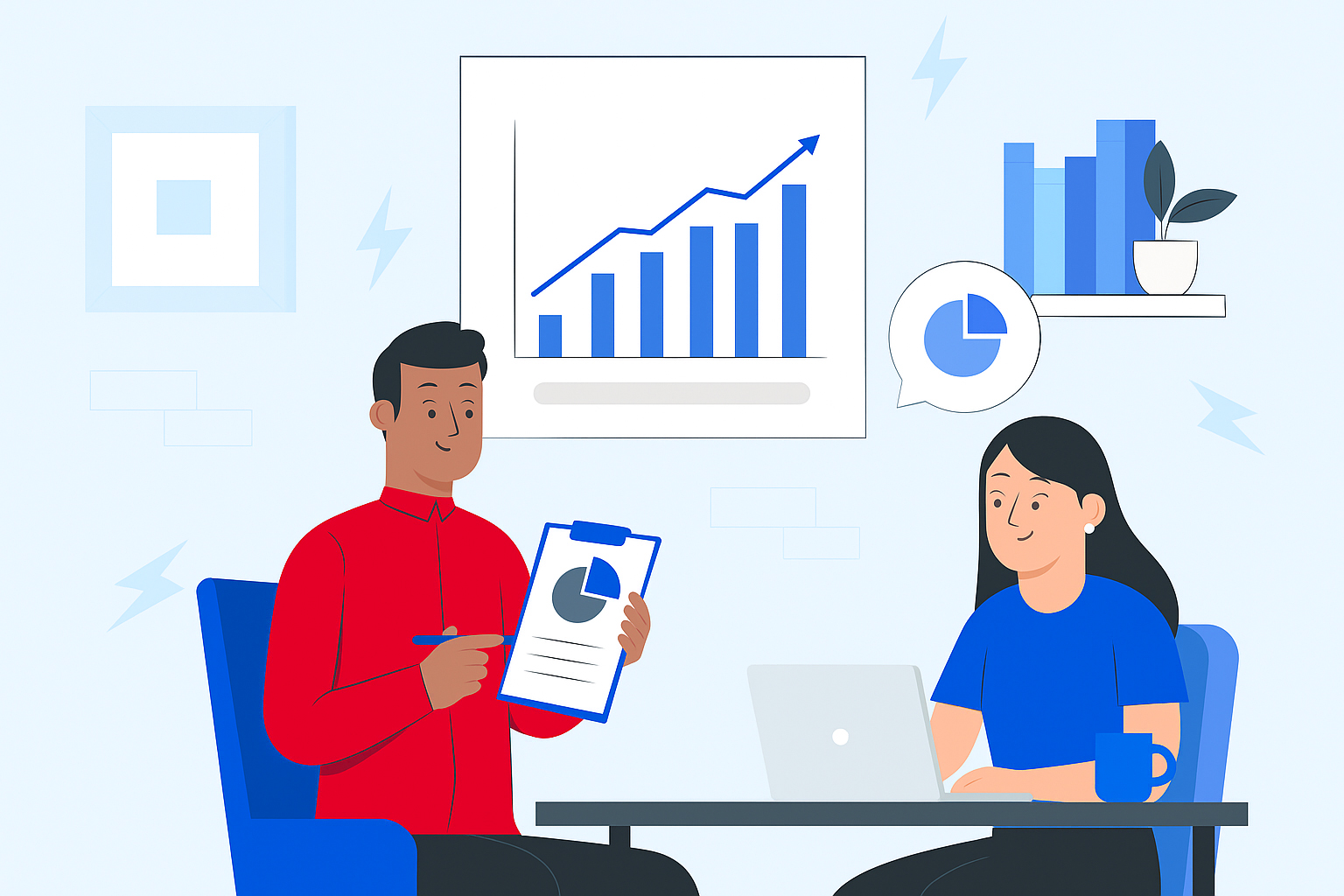
Linkable assets are high-quality pieces of content that naturally attract backlinks from other websites. These are informative, valuable, and original resources that users and site owners genuinely want to reference, making them a powerful tool for link building.
It’s essential to understand that not all online content earns backlinks. Most published materials don’t offer enough value to be worth linking to.
That’s precisely the problem linkable assets are designed to solve. They’re created with a clear goal: to serve as a valuable resource for your audience. They’re crafted with your users’ needs in mind and with a deep understanding of what makes people want to share and link content.
Here’s an example: below is the backlink profile of one of our top-performing linkable assets, a blog post titled What Is Link Building for SEO?
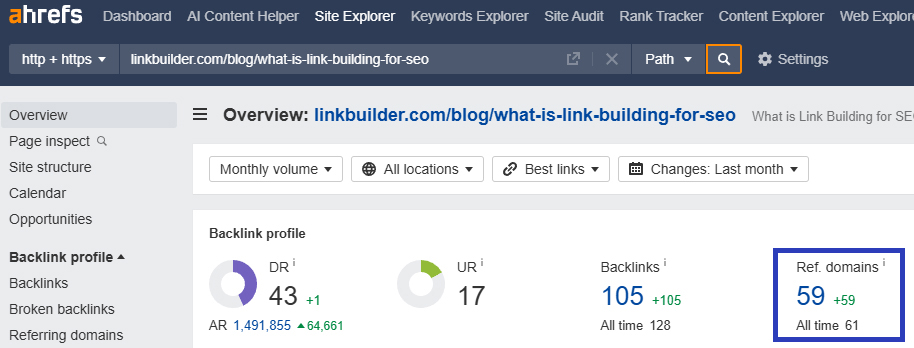
Linkable assets come in various formats, including in-depth guides, infographics, videos, tools, and downloadable resources. The most effective linkable assets are comprehensive, well-researched, and more valuable than anything your competitors have published.
To drive meaningful traffic, ensure your assets are hosted on HTML pages or embedded directly on your site.
Why Linkable Assets Matter in Your Content Strategy
Linkable assets play a key role in SEO because they help attract high-quality backlinks, one of the most important ranking factors in search engines.
Here are several key reasons why they’re so valuable:
Increased Link Equity
Backlinks act as recommendations, strengthening your site’s authority in the eyes of search engines. Earning links from high-quality sources signals that your content is valuable and worth paying attention to.
Link building is often focused on finding these linking opportunities. Still, a content link allows you to automate the process: it naturally attracts links from trusted sources and passes valuable link equity to your site with minimal effort.
At the same time, it’s important to remember: not all backlinks are equally valuable. Link equity (or “link juice”) reflects the SEO value passed from one site to another through a hyperlink. A single link from a strong, authoritative site can deliver more value than dozens of links from lower-quality websites. That’s why focusing on creating useful and valuable content is the key to effective link building.
Growth in Organic Traffic
Linkable assets don’t just support your SEO, they also boost your organic reach.
When your content appears on authoritative platforms, it becomes visible to a broader audience that’s more likely to share valuable resources.
As a result, the links spread naturally, bringing more visitors to your site, without needing to invest in paid advertising.
Strengthening Trust in Your Brand
Links from well-known and trusted websites help build not only SEO value but also user trust.
The more often people come across your content on respected platforms, the more likely they are to see you as an expert and a reliable partner. This doesn’t just increase brand exposure, it turns casual visitors into loyal customers.
Growth in Referral Traffic
Helpful resources published on popular websites attract engaged visitors.
An increase in users who click through to your site from external sources helps grow your audience and reduces dependence on search traffic alone.
Building Relationships in Your Niche
Link-building assets help you naturally integrate into your industry's professional community. When you’re featured by niche blogs, media outlets, and experts, it enhances your brand’s credibility.
Collaborating through guest posts, co-created content, and expert mentions helps you build a strong network of mutually beneficial relationships, which over time expands your reach and influence.
Saving Resources on Link Building
Linkable assets generate a steady and long-term stream of high-quality backlinks.
They reduce the need for constant outreach and new link placements (link building ideas), increasing efficiency by using a single resource across multiple campaigns. This saves both time and effort as you work toward your SEO goals.
Improved Search Visibility
Because linkable assets attract a large number of backlinks, they help improve your site’s rankings and indexing in search engines.
This not only strengthens your domain authority but also helps create a solid, sustainable link profile that supports long-term SEO performance.
Drawbacks of Linkable Assets
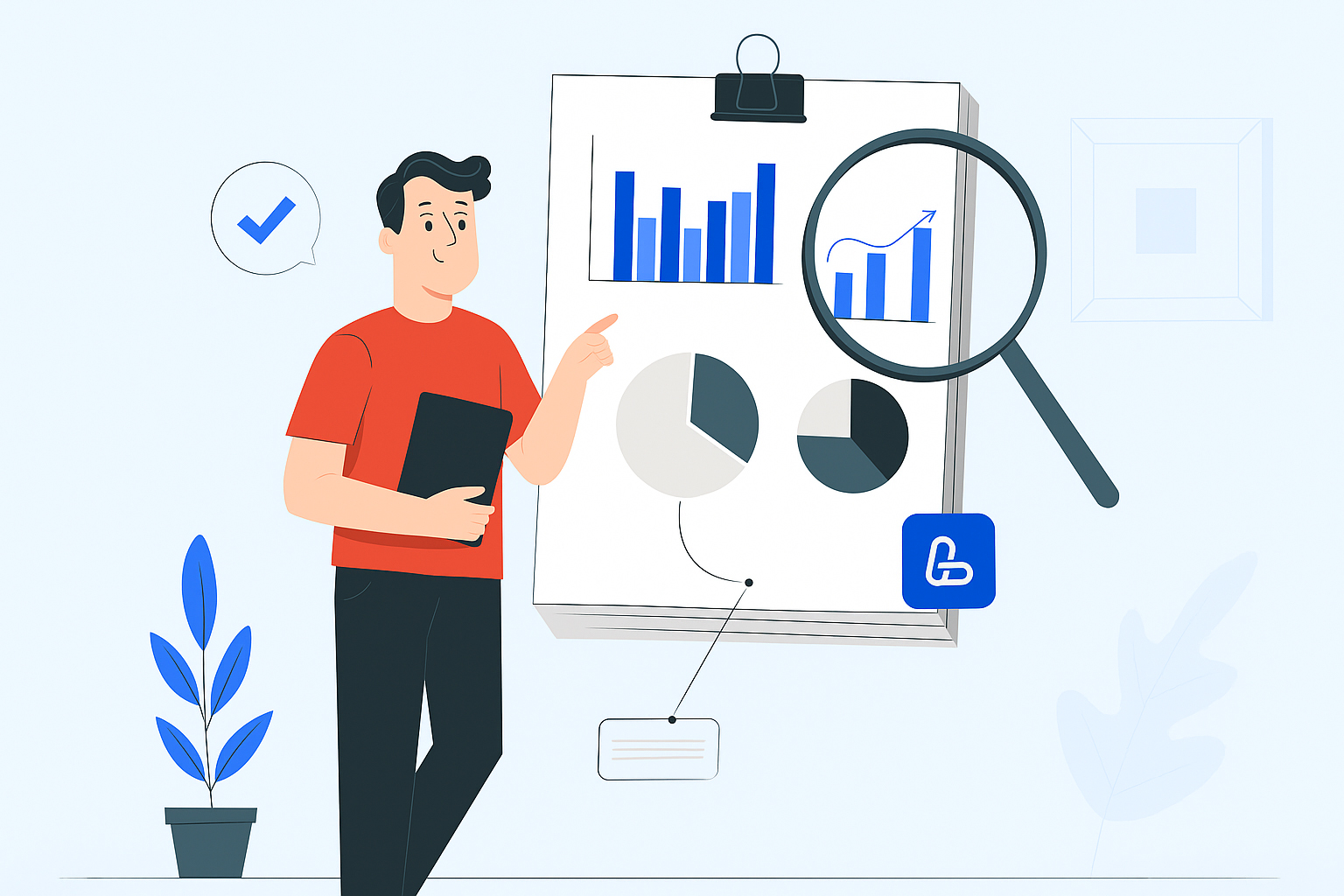
- Time and Resource Intensive
- Creating high-quality linkable assets, such as original research, infographics, or interactive tools, requires significant time and financial investment.
- Small businesses or lean marketing teams may struggle to produce and promote such content consistently.
- Keeping assets up to date is necessary to maintain their relevance and usefulness.
- No Guarantee of Backlinks
- Even if your content is well-crafted and valuable, there’s no guarantee that other websites will link to it.
- Effective outreach is often required to promote the asset, and even that doesn’t always lead to success.
- A risk that your content could be copied or reused without proper attribution or a backlink to the original source.
- Hard to Measure Success
- The SEO impact of linkable assets can be delayed, as search engines need time to index and evaluate new links.
- It’s often difficult to pinpoint which exact links or assets contributed to improved rankings.
- Advanced analytics tools are usually required to track the performance of your linkable content accurately.
- High Competition
- There’s intense competition for audience attention and backlinks.
- Larger brands with bigger budgets often dominate the space, leaving fewer opportunities for smaller companies.
- Search engine algorithm updates constantly force marketers to adjust their strategies.
- Risk of Becoming Outdated
- Some linkable assets, especially data-driven content or research, can quickly become outdated, reducing their appeal to linking sites.
- Regular content monitoring and timely updates are essential to keep the asset valuable over time.
- Dependence on External Factors
- The success of linkable assets isn’t determined solely by content quality. External factors, such as changes to search algorithms or shifts in user behavior, can significantly impact performance.
- The risk of losing backlinks if referring domains shut down or remove the link.
- Limited Scalability
- Creating and promoting linkable assets often requires a highly customized approach, making it difficult to scale the strategy.
- Each asset typically demands its own outreach and promotion plan, placing additional strain on the marketing team.
- Risk of Low ROI
- Investments in producing and promoting linkable content don’t consistently deliver a high return if the asset doesn’t drive meaningful traffic or improve rankings.
- Thorough planning, research, and performance tracking are key to minimizing risks.
Creating linkable assets for SEO requires in-depth research, a creative mindset, and a well-executed promotion strategy. Despite the challenges, their long-term value can be well worth the effort, helping websites earn strong visibility and lasting results in search.
Types of Linkable Assets
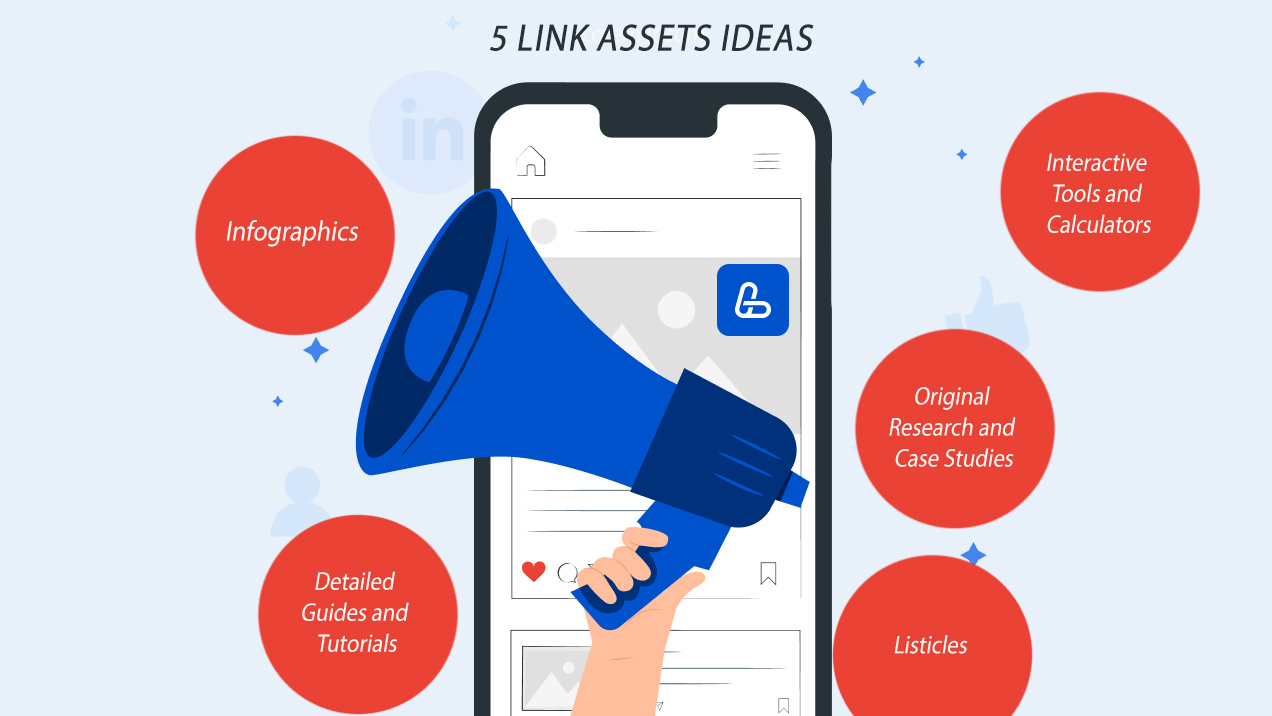
Link-attracting content plays a crucial role in link-building strategy, helping significantly boost your website’s visibility in search engines.
Linkable assets go beyond standard backlinks; they represent a wide range of tools that can impact both your authority and search presence.
Understanding and effectively using different types of linkable assets allows you to build a solid and effective SEO strategy that supports your brand’s overall SEO goals.
Infographics
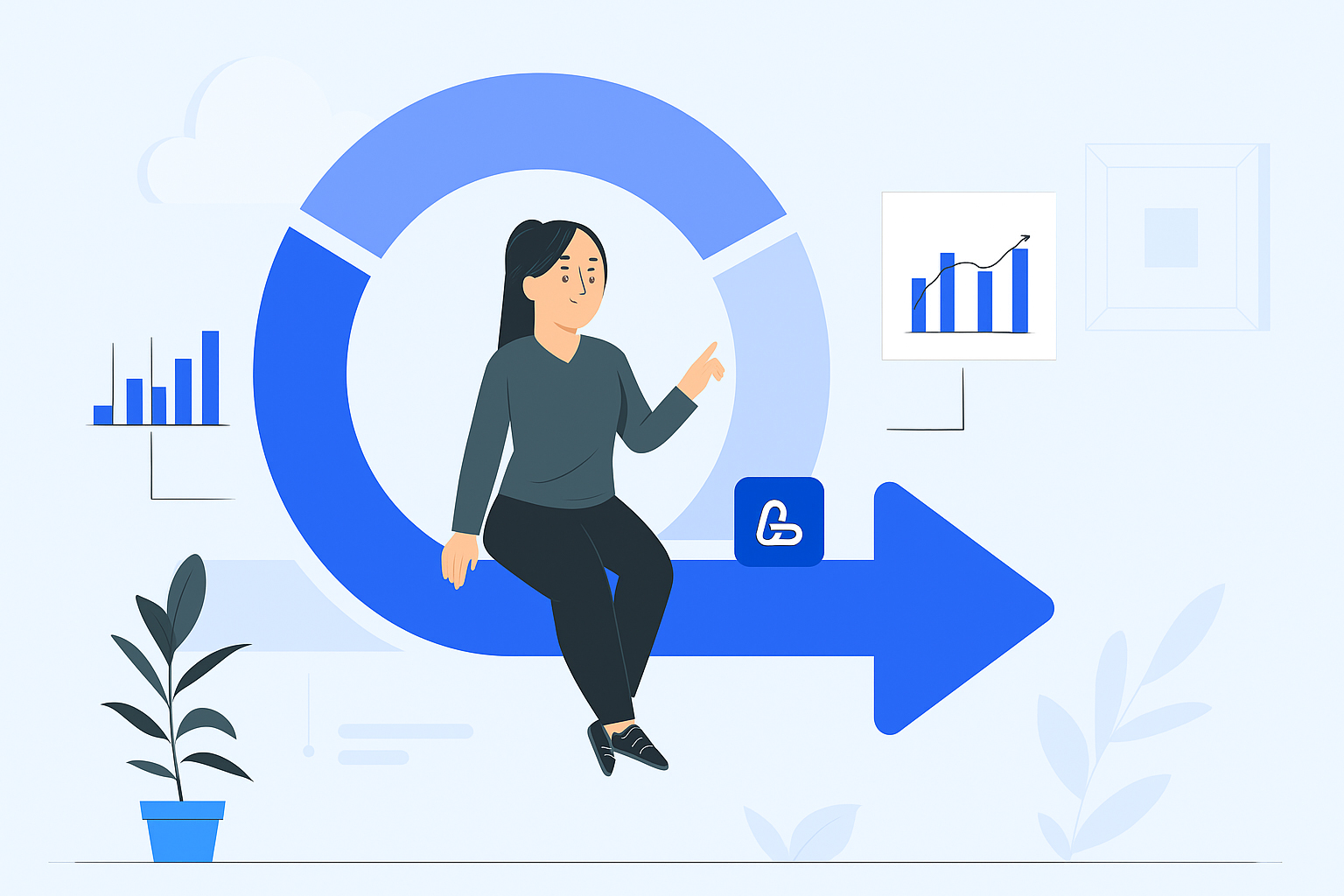
Infographics are a powerful way to visualize complex information and present it in a clear, engaging, and easy-to-digest format.
No more text-heavy explanations, by using infographics to deliver data, you ensure your audience clearly understands your message.
They’re also a strategic asset that can attract backlinks, drive traffic, and enhance your site’s authority.
Let’s explore why infographics are so effective, how to create them, and how to use them for link building.
Benefits of Infographics as Valuable Content for Earning Backlinks
- Natural Link Profile
Linkable assets help build a healthy and natural backlink profile, which positively impacts search engine rankings.
- Visual Appeal
The human brain processes visual information 60,000 times faster than text. With its vibrant colors, clear graphics, and structured data, an infographic looks far more appealing than a wall of plain text. This makes it an ideal format for social media, blogs, and websites where visual content tends to receive more engagement.
- Informational Value
A well-crafted infographic delivers practical and easy-to-digest information. For instance, an infographic on food and wine pairings not only draws attention but also serves as a helpful resource for restaurants, bloggers, and food enthusiasts. This type of linkable asset increases the chances of earning backlinks.
- Credibility and Authority
When based on reliable data and research, an infographic enhances trust in your website and helps attract links from other sites and bloggers who use it to support their own content.
For example, an infographic built on WHO data will be seen as a credible source and can attract backlinks from authoritative, niche-relevant websites.
- Brand Awareness
Every time your content is mentioned or linked to, your brand name is introduced to a new audience.
- Simplifying Complex Topics
Infographics break down complex concepts into simple, understandable elements. For example, an infographic on blockchain can explain the technology in a way that even beginners can grasp. This makes it useful for a broader audience.
- Comprehensiveness
Infographics can cover a wide range of topics, making them applicable in various contexts. For instance, an infographic on healthy eating can be valuable for fitness blogs, health websites, and educational platforms alike.
- Reputation Building
When authoritative publications link to your content, it boosts your brand’s credibility and attracts targeted traffic.
- Educational Purpose
Infographics often serve an educational function by breaking down information into steps, phases, or categories. For example, an infographic about SEO can explain how to optimize a website for search engines. This type of content is often saved and shared, increasing its link-building potential.
- High Shareability
Infographics are easily shareable across social media platforms, blogs, and forums. This boosts visibility and the likelihood of earning backlinks.
- Higher Search Rankings
Content featuring infographics often gains more external links, which positively influences SEO.
Infographics also help increase time spent on site, another factor that can improve rankings.
- Lower Link Building Costs
As mentioned earlier, linkable assets attract backlinks organically, which helps reduce promotional expenses.
Now, here’s a clear example of how infographics really work.
Let’s compare two websites that published articles on a similar topic - types of infographics.
The first website published the article without any infographic examples, just plain text:
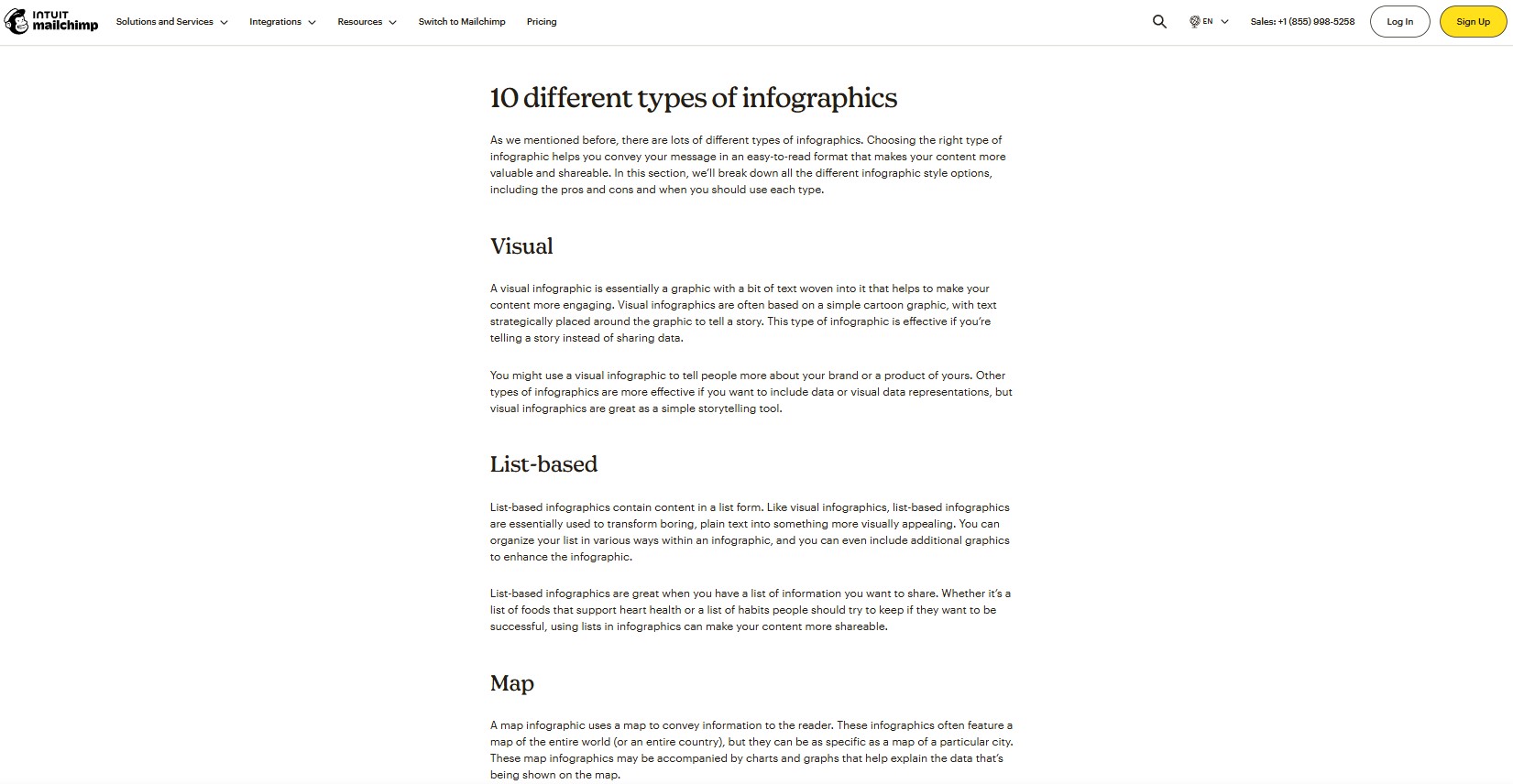
Typically, this type of presentation is less engaging than similar content enriched with infographics, charts, statistics, and other linkable assets.
And indeed, this article received only 8 referring domains:

Meanwhile, another site published similar content but included infographic examples and templates that others could use:
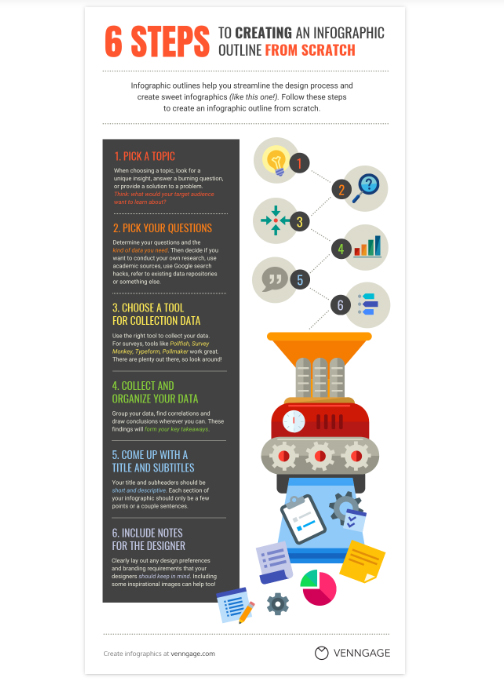
The number of referring domains speaks for itself:

We’re not claiming that the infographics and templates alone caused the rise in referring domains and the increase in organic search traffic across the site. Many factors contribute to such results. However, these two elements likely played a significant role (in getting the maximum number of links from your infographic.)
We also decided to use a template to walk you through the process of selecting guest posting opportunities using our Guest Post Selection Tool:
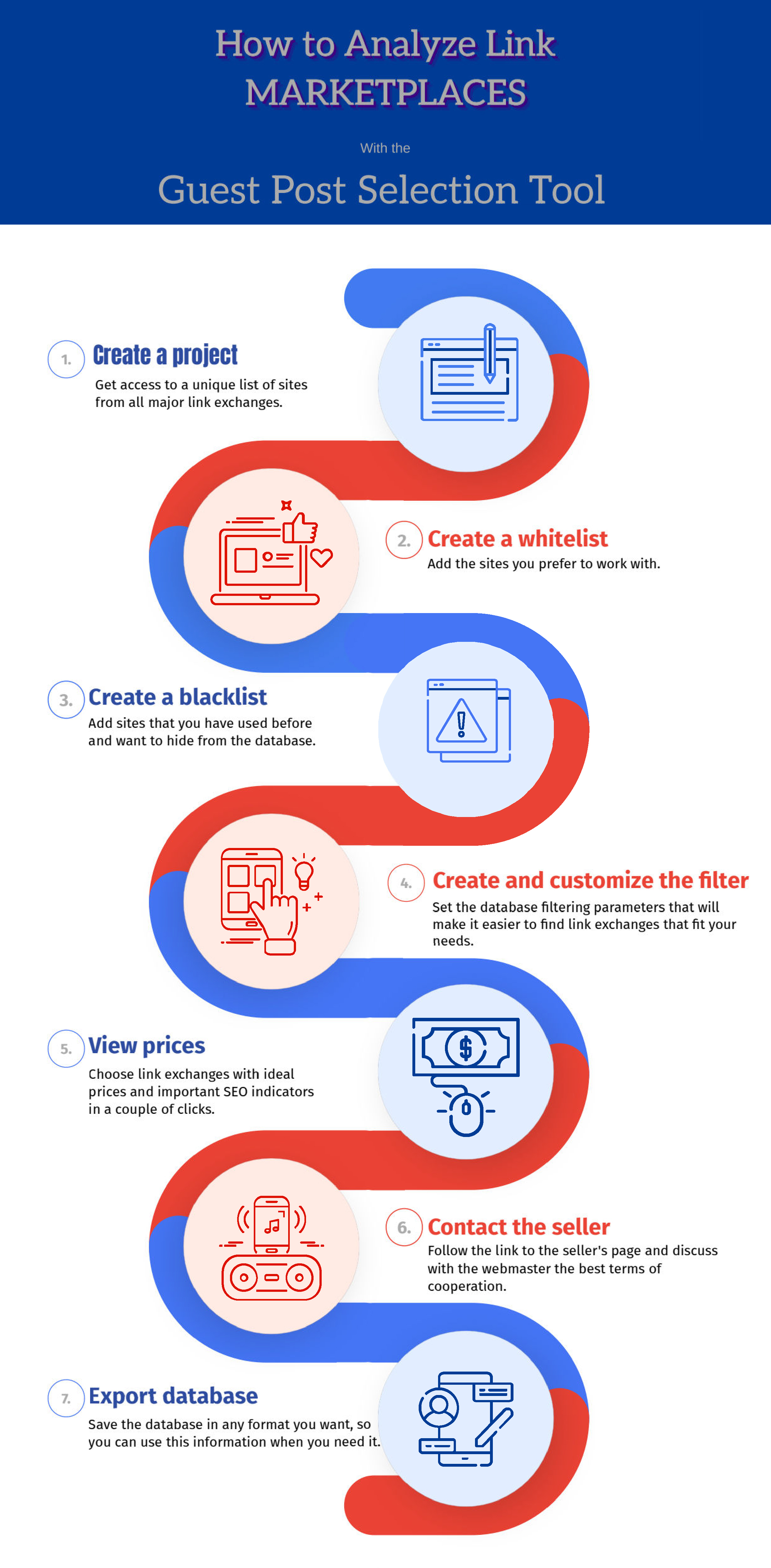
What Kinds of Links Can You Get from Infographics?
- Links from niche-relevant blogs.
- Links from websites that publish visual content, such as Pinterest or Visual.ly.
- Backlinks ideas from other authors who use your infographic in their content.
How to Create Infographics That Attract Links?
- Thorough Topic Research
A successful infographic starts with solid research. Use authoritative sources, such as scientific articles, reports, and statistical data. The more unique and valuable the information, the higher the chances it will earn backlinks.
- Focus on Your Target Audience
Identify who your audience is and what problems they’re solving. For example, if you're creating an infographic for marketers, focus on data about the ROI of advertising campaigns.
- Professional Design
Your infographic should be not only informative but also visually appealing. Use professional tools like Canva, Adobe Illustrator, or Piktochart to create a high-quality design.
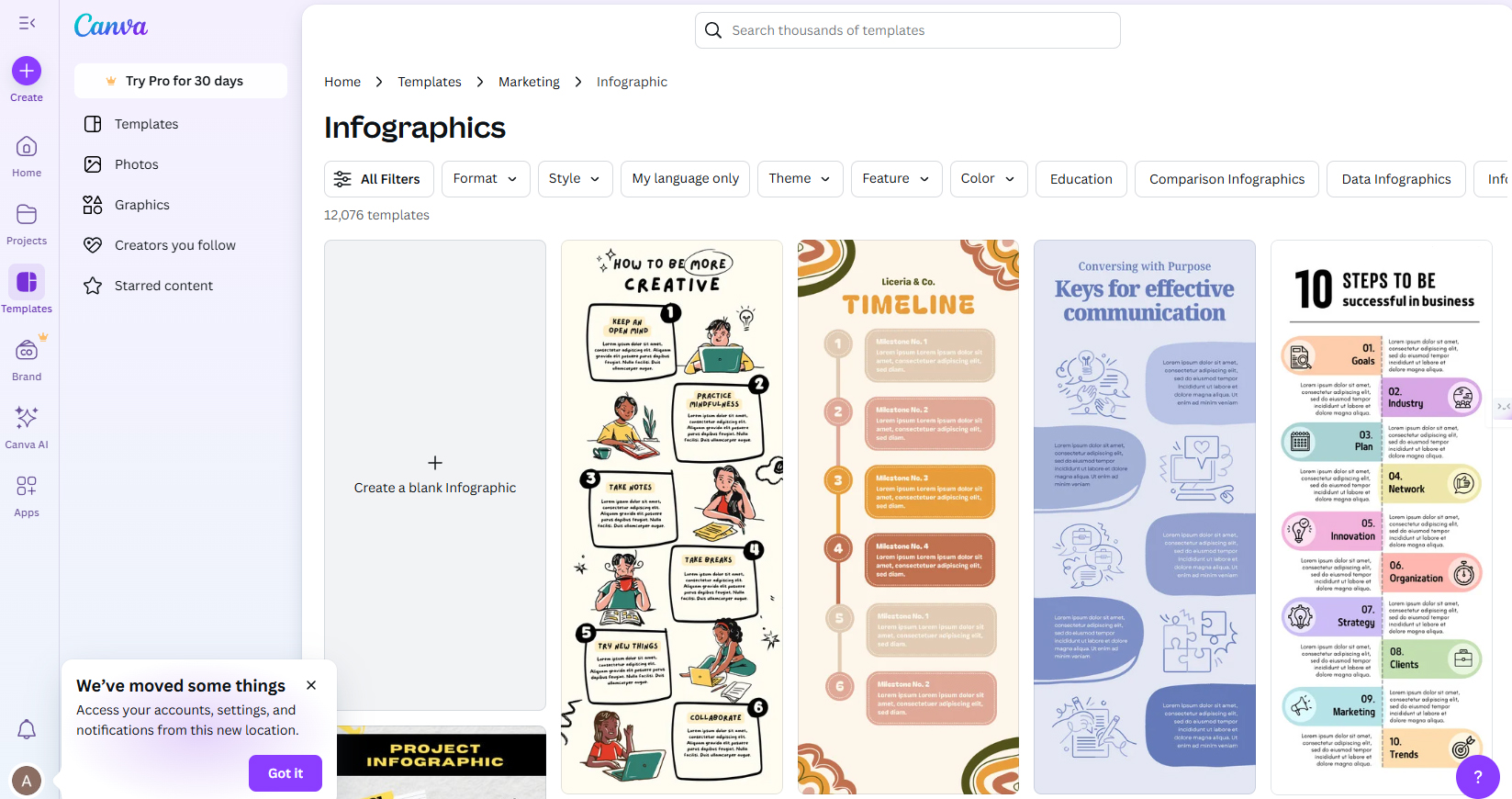
- SEO Optimization
Add keywords to the title, description, and image alt text. This will help your infographic rank in search engines.
- Include a Call to Action
Add a call to action in the infographic, such as “Share this infographic” or “Learn more on our website.” This increases the chances of shares and links.
How to Use Infographics for Link Building?
(With a detailed breakdown of the primary analysis tools you can use for other types of linkable assets as well.)
1. Pitch Your Infographic to Niche Websites
Find websites that already publish infographics and offer them your own.
Use tools like Ahrefs' Content Explorer to find such websites.
To do this, enter a keyword related to your niche in “Content Explorer” and add “[infographics]” in quotation marks.
For example:
- Type the query linkbuilding + "[infographics]".
- Choose where the keyword should be searched (linkbuilding): everywhere, in the title, in the content, or the URL.
- Click the Search button.
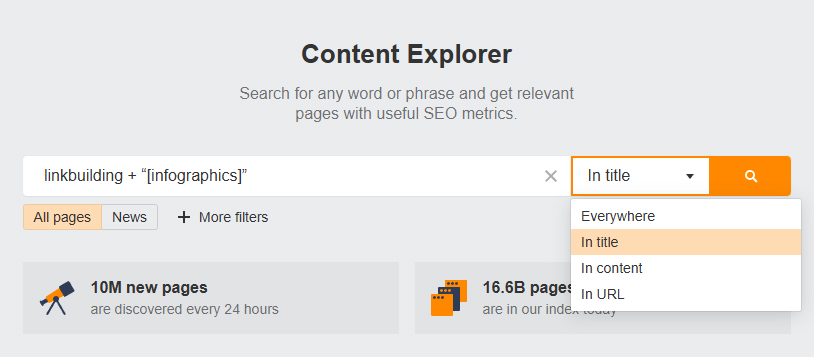
- Then filter the list to show the most recent results published in the last 12 months.
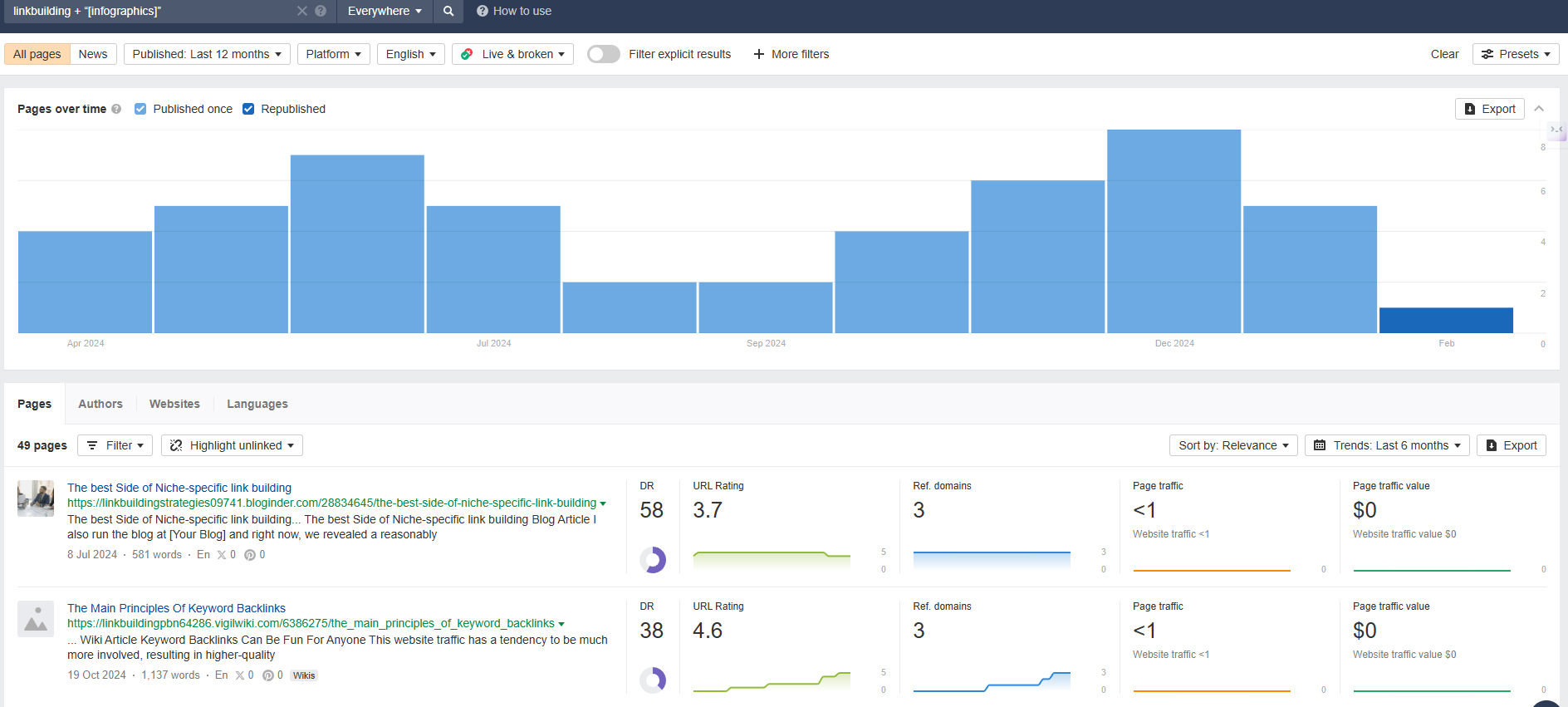
Now you have a list of websites that recently published content on a related topic, and you can reach out to them to pitch your infographic.
2. Apply Proven Concepts to Other Niches
Not sure how to find linkable assets analytics or what tools to use for analyzing popular content?
Try these 3 popular content analysis tools:
Ahrefs
Use tools like “Content Explorer” from Ahrefs to find popular infographics across various topics:
- Enter a query like "infographic" or "how it works infographic".
- Filter the results to display only fresh examples from the last 12 months.
- Check the number of Referring Domains for each infographic.
For example, the infographic “The ROI of Email Marketing” attracted links from over 2700 domains.
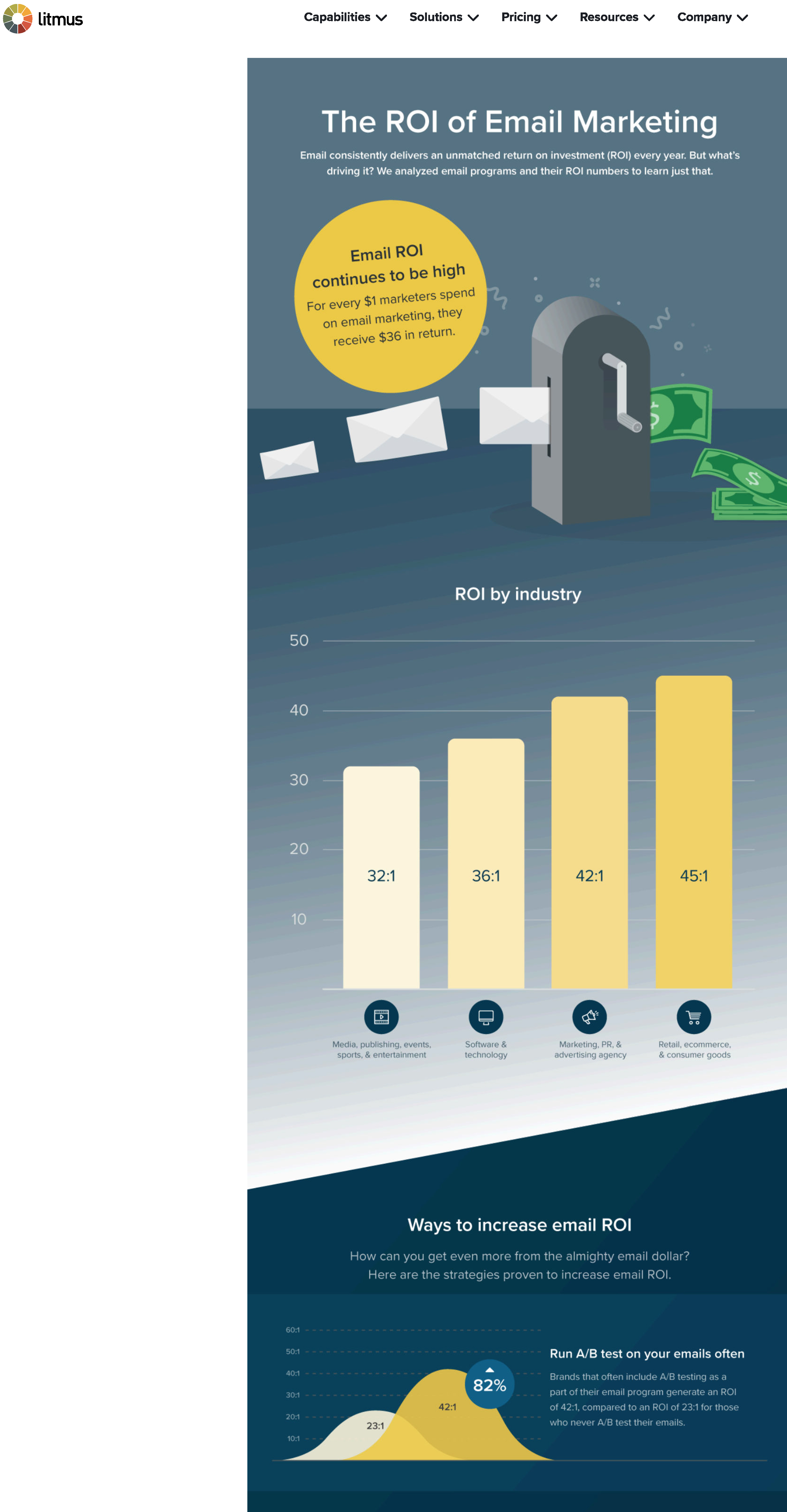
This proves that explaining complex topics through infographics is effective, and quite well.
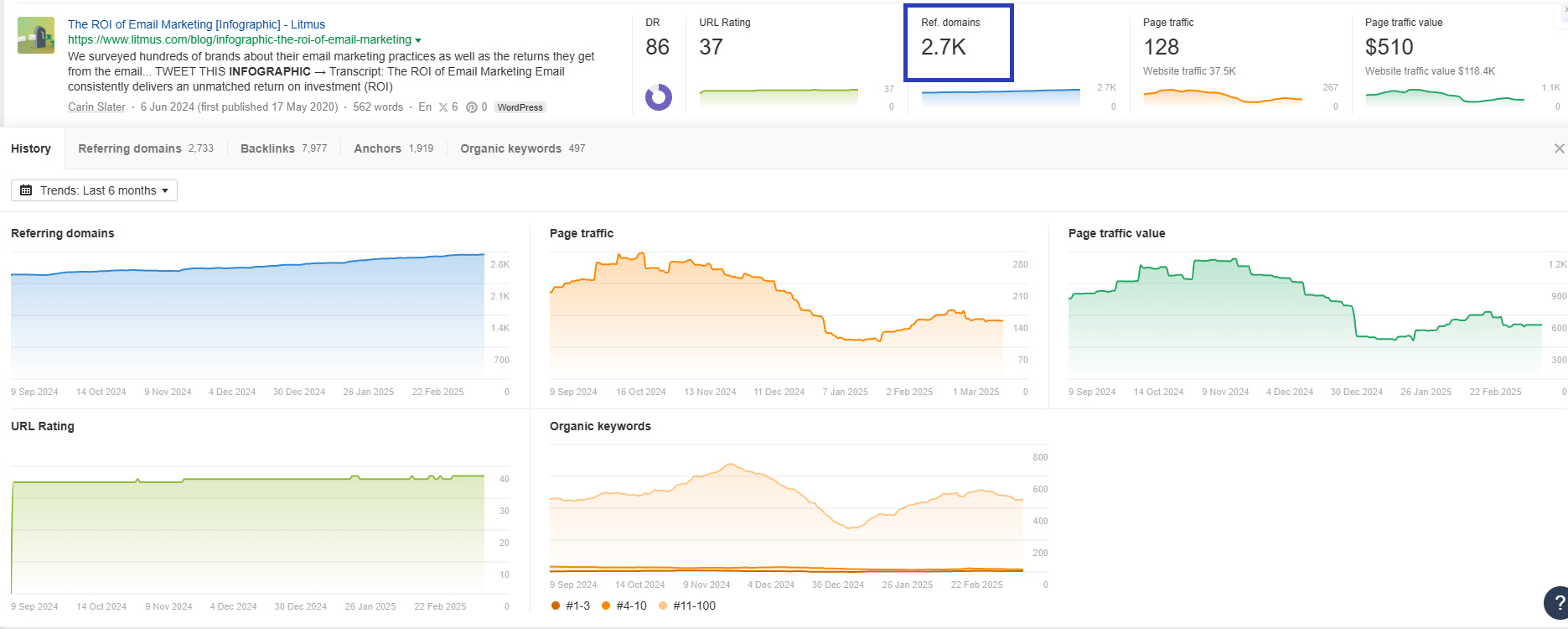
So why not adapt this concept to your own niche?
Advantages of Ahrefs Content Explorer
- In-depth backlink analysis:
- Shows how many backlinks a specific piece of content has received.
- Helps identify pages with high link authority.
- Traffic data:
- Estimates how much traffic the content attracts.
- Displays traffic sources (organic, referral, social).
- Social shares:
- Shows how many times the content has been shared on social platforms (Facebook, X (Twitter), Pinterest, etc.).
- Filters and sorting options:
- Allows you to filter results by:
- Content type (articles, infographics, videos).
- Language.
- Publication date.
- Number of backlinks and social shares.
- Content ideas:
- Helps you discover popular topics and content formats.
- Shows what works for your competitors.
- Integration with other Ahrefs tools:
- Easily switch between “Content Explorer”, “Site Explorer”, and other tools for comprehensive analysis.
Disadvantages of Ahrefs Content Explorer
- Limited social share analytics:
- While Ahrefs displays the number of social shares, some data may be less detailed than that of BuzzSumo.
- No engagement metrics:
- Ahrefs doesn’t provide metrics like time on page or bounce rate.
If for some reason you’re not using Ahrefs, you can try other analysis tools:
Semrush
Here you can find proven concepts and successful infographic examples in different niches using tools like:
Topic Research – a tool for generating content ideas. It helps you discover popular topics, questions, and trends in your niche.
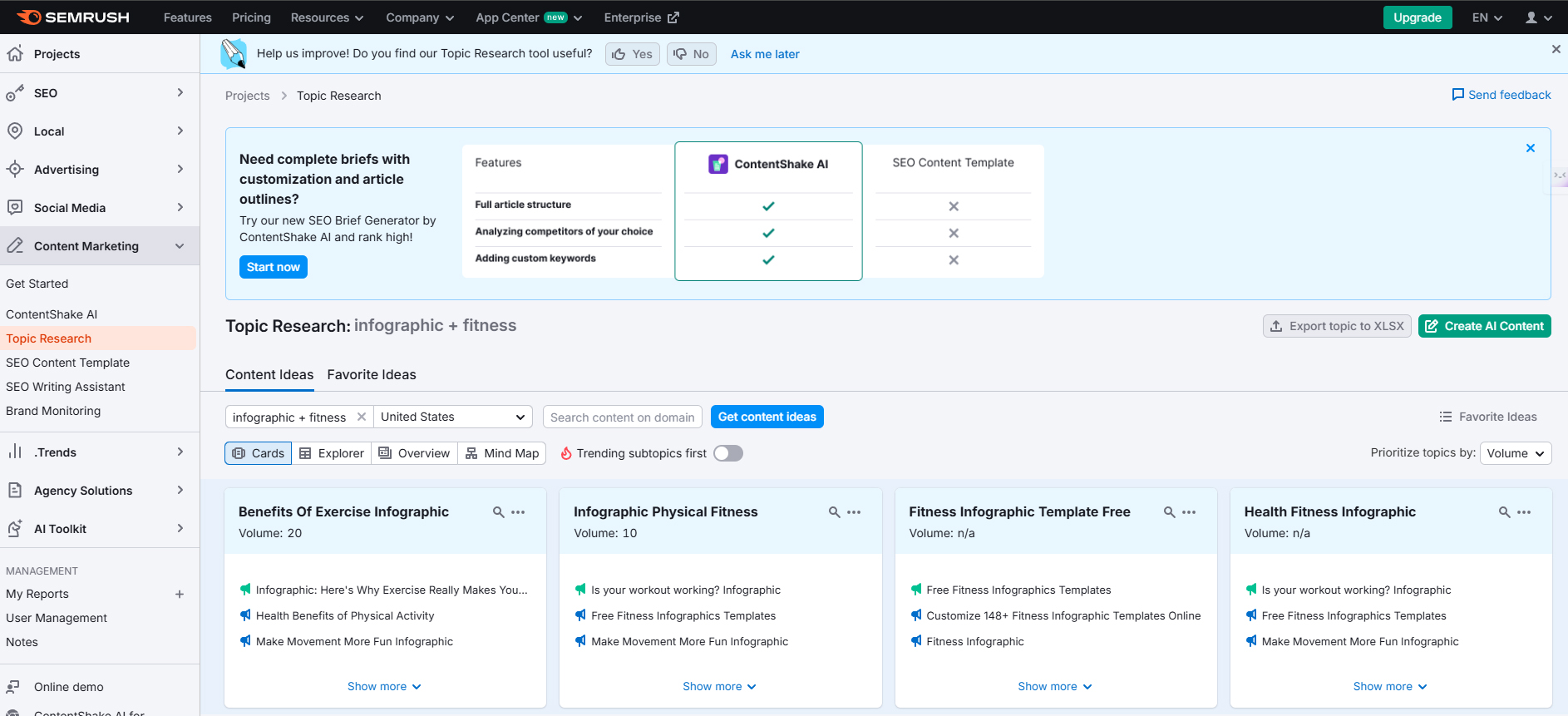
How it works:
- Entering a keyword:
- You enter a keyword or topic, for example, “infographic + fitness.”
- Idea generation:
- Semrush analyzes the data and provides a list of related topics, headlines, and questions.
- Topic cards:
- Each topic is displayed as a card with example headlines, questions, and popular articles.
- Filters:
- You can filter results by content type (such as blog, video, or infographic), language, and other parameters.
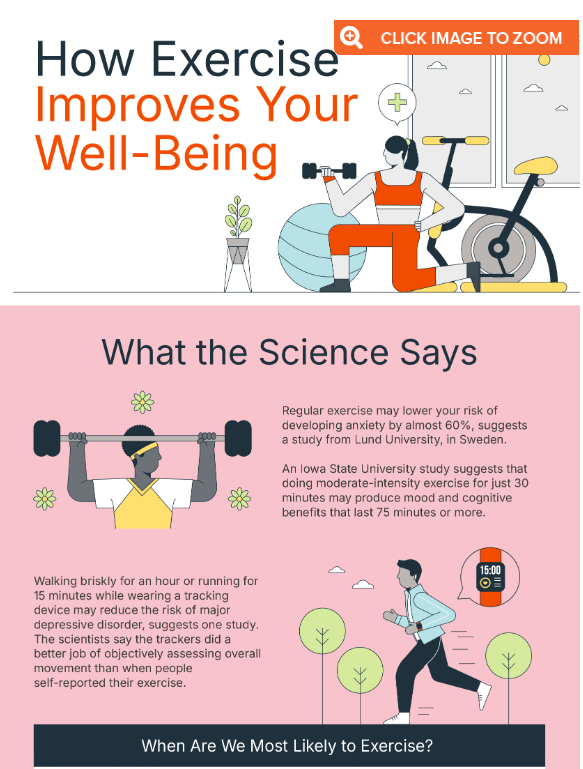
- You can filter results by content type (such as blog, video, or infographic), language, and other parameters.
Advantages:
- Helps generate new content ideas.
- Shows what questions users are asking.
- Provides examples of popular articles.
Disadvantages:
- Doesn’t show backlink or traffic data.
- Limited competition analysis.
To find out how many domains link to a specific infographic, use another Semrush tool - “Backlink Analytics”.
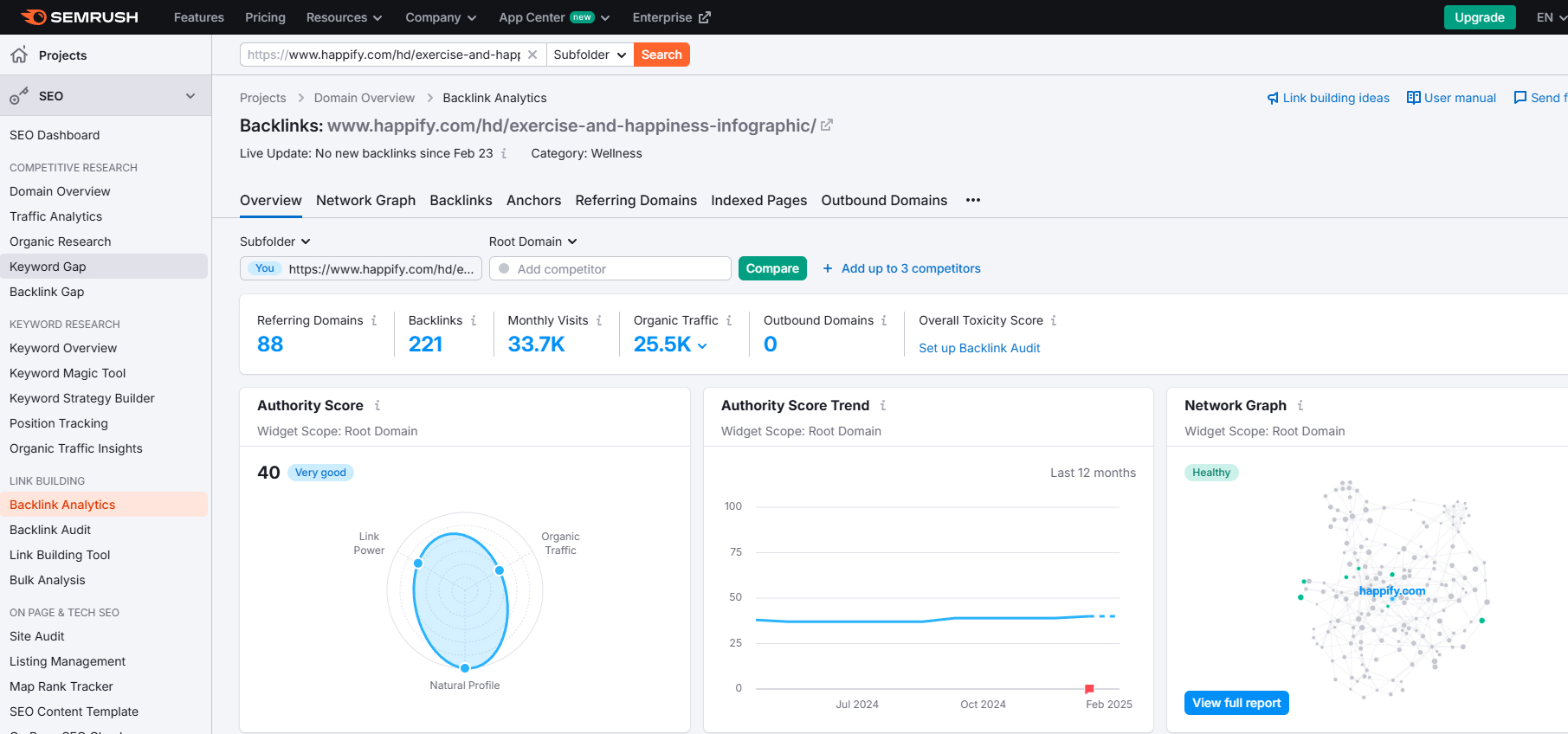
The “Backlink Analytics” tool allows you to analyze backlinks to specific pages.
How to use it:
- Enter a competitor’s domain or a specific URL.
- Check which pages have backlinks pointing to them.
- If they are infographics or articles, you’ll see them in the list.
Advantages:
- Shows which pages attract the most backlinks.
- Helps identify successful content.
Disadvantages:
- Doesn’t display social shares like the number of times a piece of content (article, infographic, video, etc.) has been shared by users on platforms like Facebook, Pinterest, LinkedIn, and others.
Moz
Aside from Ahrefs and Semrush, you can also use Moz to support your link-building efforts.
Moz doesn’t offer an exact equivalent of “Ahrefs’ Content Explorer”, but it does provide several tools that partially replicate its functionality.
Moz Keyword Explorer
Moz Keyword Explorer is a keyword research tool that helps you find popular queries and topics in your niche.
How to use it for content discovery:
- Enter a keyword like “medicine + examples infographic.”
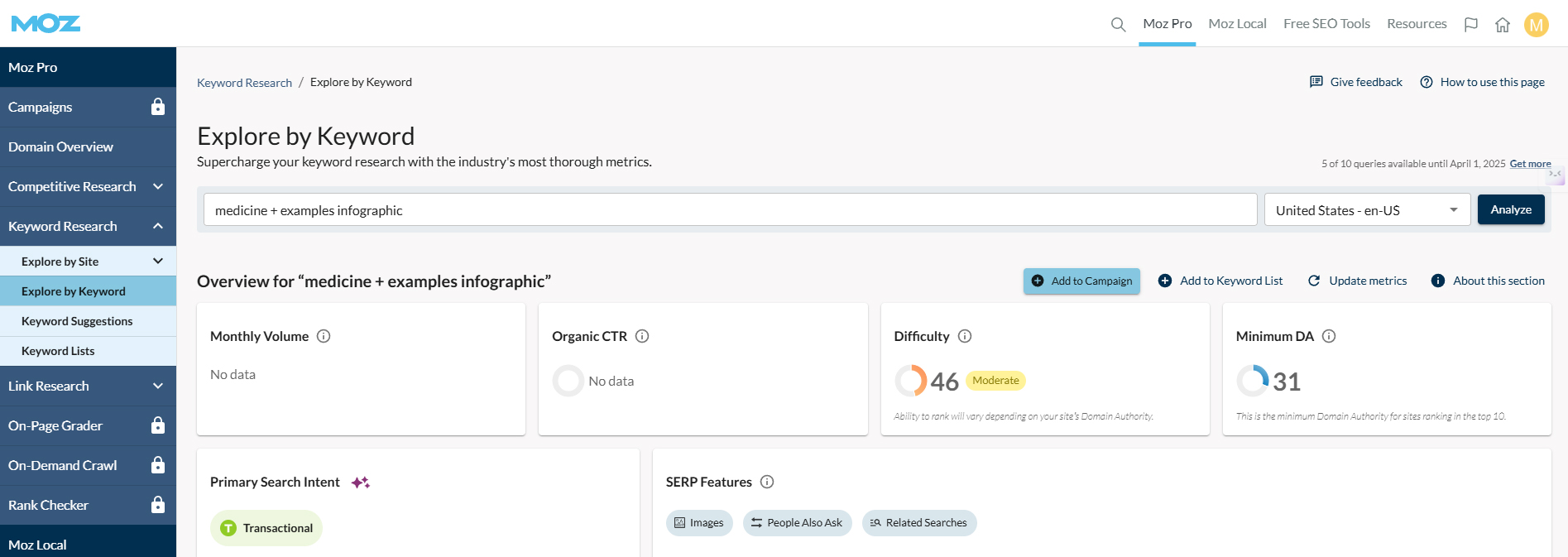
- Check the “SERP Analysis” section.
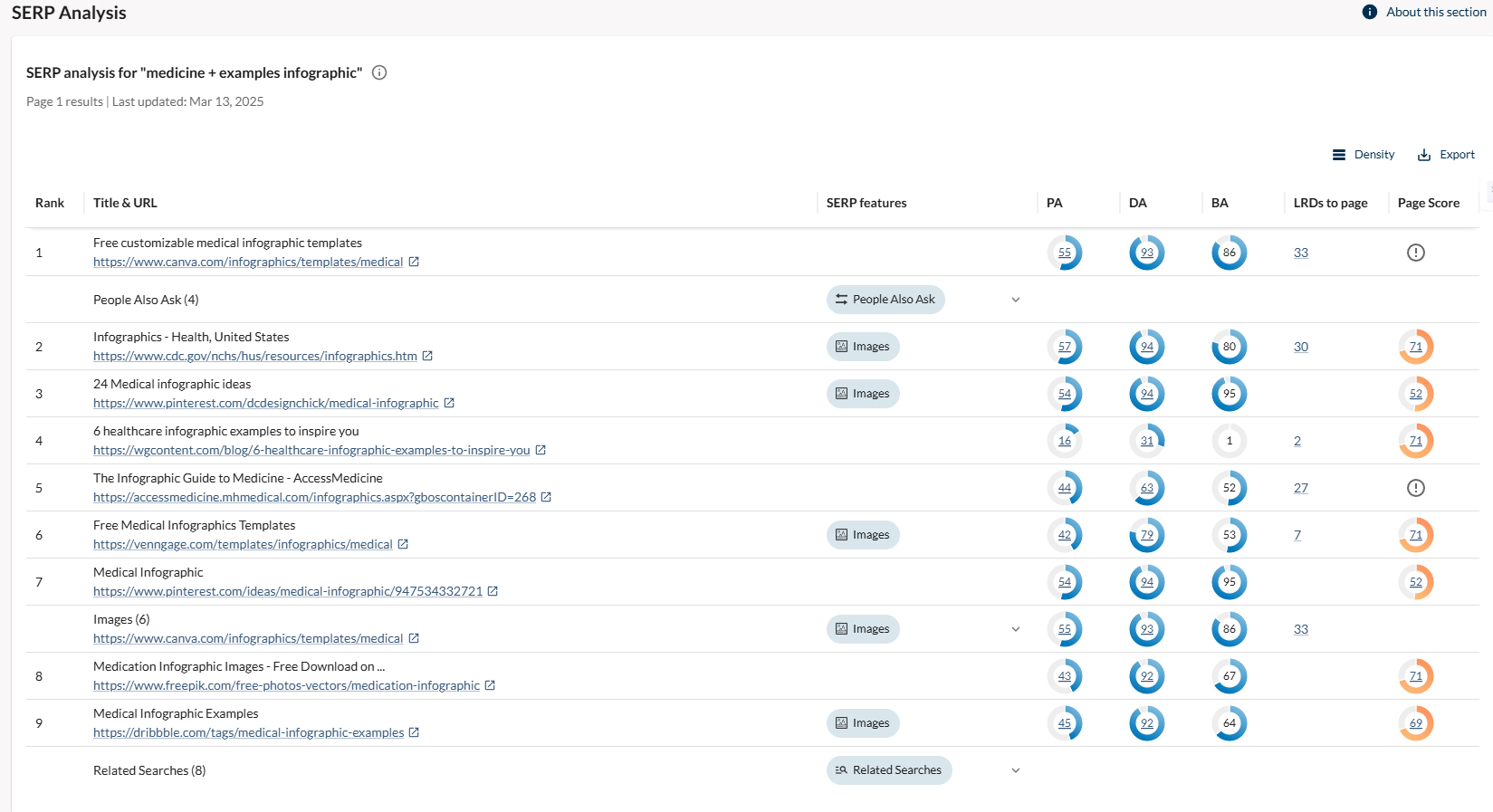
- Explore the pages that rank for this query.
- Identify examples of successful content.
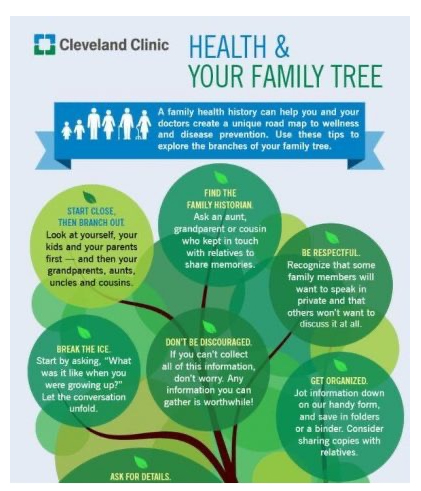
Advantages:
- Shows popular topics and search queries.
- Helps discover content that performs well in search results.
Disadvantages:
- Doesn’t show backlink data or social shares.
- Limited content analytics.
Moz Link Explorer
Link Explorer is a tool for analyzing a site’s backlink profile. It shows which pages attract the most backlinks.
How to use it for content research:
- Enter a competitor’s domain.
- Go to the “Top Pages” section.
- Check which pages attract the most backlinks.
- If they’re articles, infographics, stats pages, or other types of content, you’ll see them in the list.
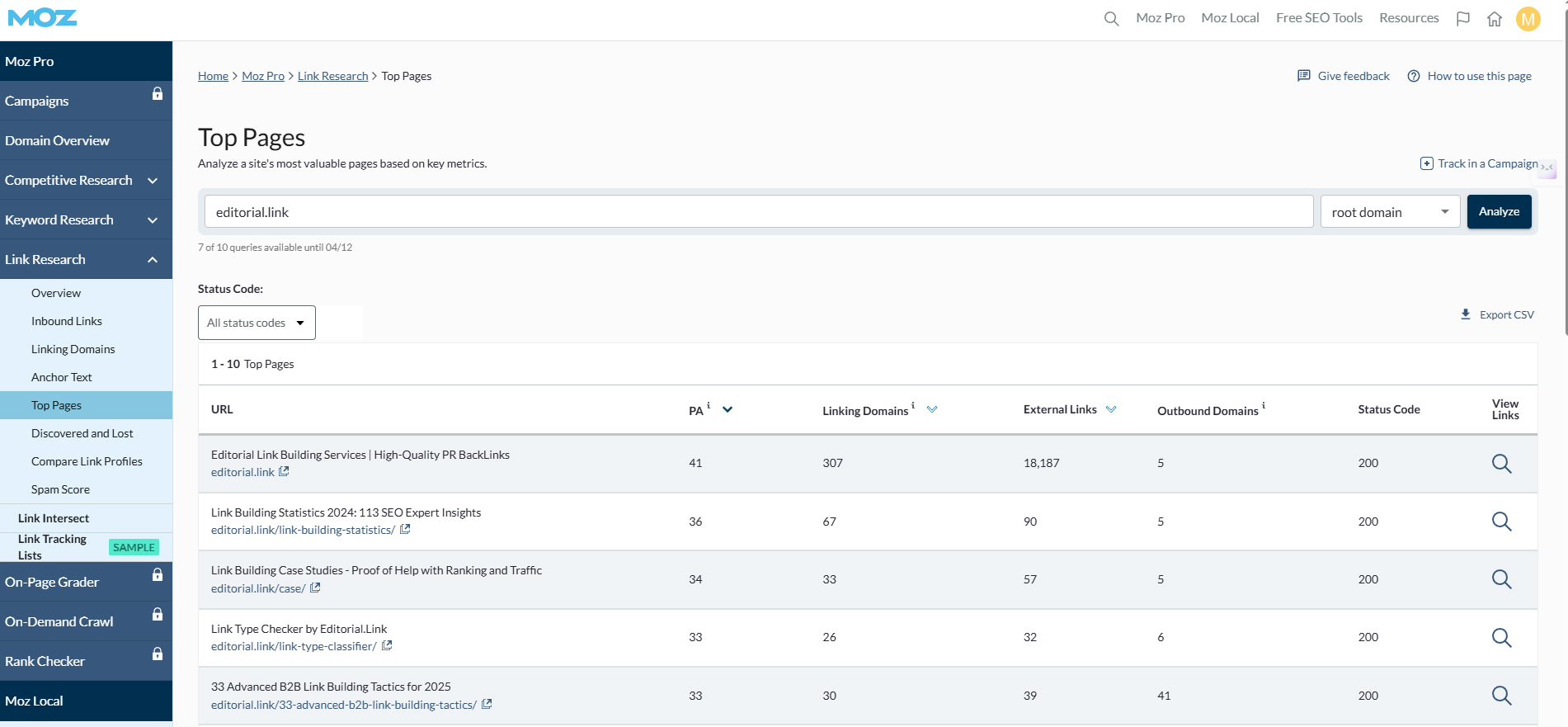
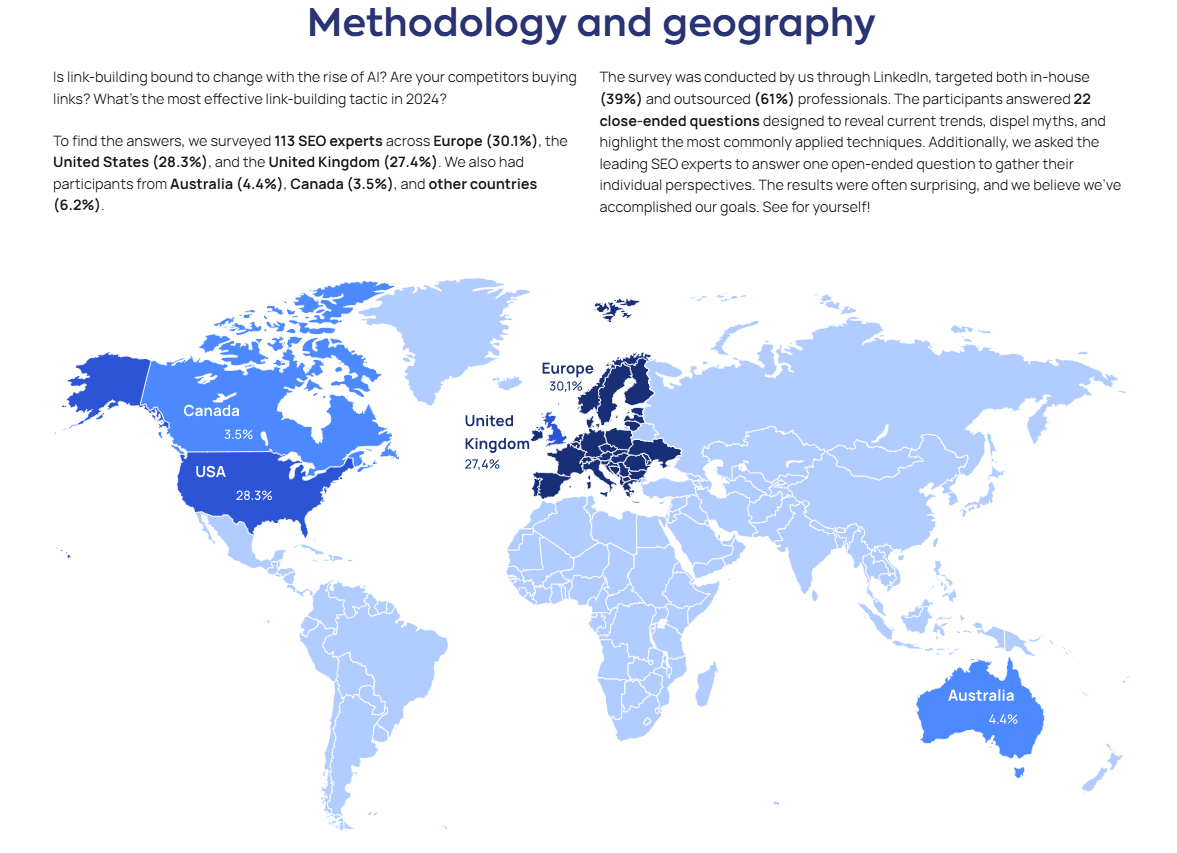
Advantages:
- Highlights the most linked-to pages.
- Helps discover your competitors’ top-performing content.
Disadvantages:
- Doesn’t show social shares or traffic data.
- Limited insights into content types.
Ahrefs, MOZ, and Semrush aren’t the only tools you can use to find and analyze popular content that helps generate quality linkable assets. You can also try BuzzSumo, Majestic, SimilarWeb, Pinterest, or Google Trends.
To avoid diving into the specifics of each tool again, here’s a quick comparison table outlining what each one offers for linkable asset research:
Tool Comparison
| Functionality | Ahrefs Content Explorer | Majestic | Semrush | BuzzSumo | Moz | SimilarWeb | Google Trends | |
|---|---|---|---|---|---|---|---|---|
| Searching for popular content | Yes | Partially | Yes | Yes | Yes | Yes | Yes | Yes |
| Backlink analysis | Yes | Yes | Yes | Partially | Yes | No | No | No |
| Social shares | Yes | No | No | Yes | No | No | Yes | No |
| Traffic | Yes | No | Yes | No | No | Yes | No | No |
| Content Ideas | Yes | No | Yes | Yes | Yes | No | Yes | Yes |
*When the table specifies “Partially”, it means that the tool provides limited functionality in that category.
What does it mean?
For Majestic:
- Majestic specializes in backlink analysis, not content discovery.
- You can use the “Top Pages” report to find popular pages, but:
- There are no filters by content type, such as articles, infographics, or videos.
- There is no data on social shares or traffic.
Example:
- If you enter a competitor’s domain, Majestic will show their most linked pages, but it won’t tell you if they’re infographics or articles.
For BuzzSumo:
- BuzzSumo shows backlink counts, but with limited detail compared to Ahrefs or Majestic.
- You can see how many domains link to the page, but:
- There is no data about link quality (e.g., Trust Flow, Domain Rating).
- There are no details about anchor texts or linked pages.
Example:
- If an article has 50 backlinks, BuzzSumo displays the number but not the details of the linking domains.
As you can see, Ahrefs offers the most comprehensive analytics suite for finding proven concepts that can inspire your own linkable assets. Still, you can always use a different tool or a combination of tools depending on what feels most intuitive and effective for your workflow.
3. Create Interactive Infographics
Interactive infographics let users explore and engage with your data, earning more backlinks than static designs. For example, infographics with filters or animations.
- Publish infographics on specialized platforms
Post your infographic on platforms such as Visual.ly, Cool Infographics, Piktochart, or Infogram. This will increase its visibility and chances of getting links.
- Use infographics in guest posts
Offer infographics as an addition to your guest post on reputable sites. This will increase the likelihood that it will be referenced.
- Optimize the infographic for SEO
Add keywords to the title, description, and alt text of the infographic. This will help it rank better in search engines and attract more organic traffic, increasing the chances of getting links.
- Create interactive elements for social media
Split your infographic into several parts and publish them as a series of social media posts on Pinterest, Behance, or Dribbble. Add interactive elements such as polls or quizzes to engage your audience and encourage them to share the content.
- Offer infographics for educational resources
Connect with educational institutions, blogs, or online courses that can use your infographic as a learning resource. This will not only increase the number of links but also enhance the authority of your content.
Interactive Tools and Calculators
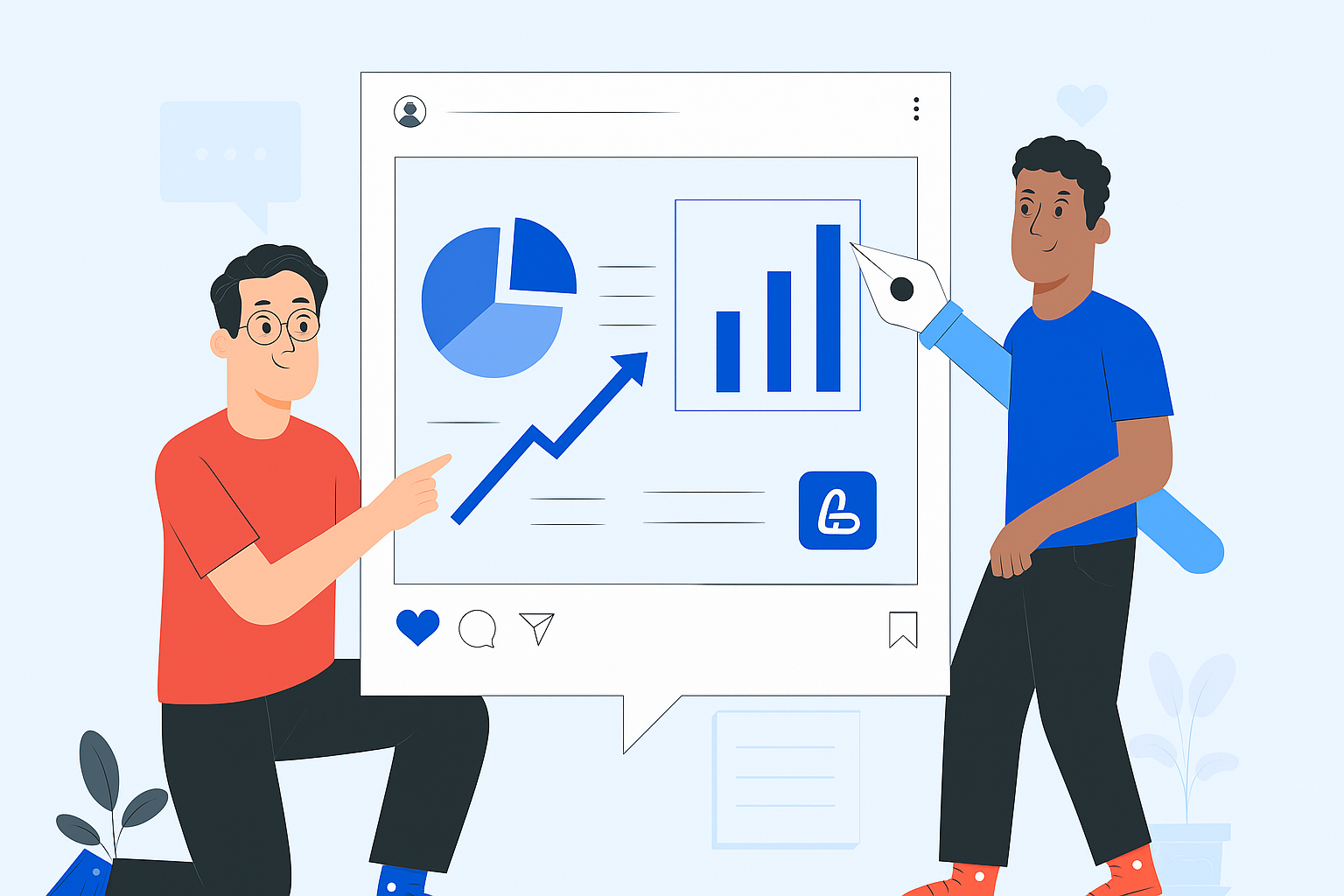
Interactive tools and calculators are online resources designed to help users solve specific problems, perform calculations, or receive personalized recommendations. They can cover a wide range of topics from finance and health to design and education. Examples include mortgage calculators, color palette generators, or SEO analysis tools.
What sets these tools apart is their interactivity. Unlike static content, they allow users to engage directly with data and receive instant results. This not only makes them practical but also memorable, significantly increasing the likelihood that they will be shared.
Benefits of Interactive Tools and Calculators
- Practical Value
Interactive tools solve real user problems. For example, a calorie calculator helps people track their diet, while a keyword analyzer helps optimize content for SEO. Their usefulness encourages users to return and recommend them to others.
- High Engagement
Interactivity keeps users engaged longer than plain text or visual content. This improves on-site behavior metrics such as time on page and page depth.
- Viral Potential
Unique and helpful tools often spread organically across social media, blogs, and forums. This can result in natural backlinks and increased traffic.
- Long-Term Relevance
Well-built tools remain useful over time, serving as a steady source of backlinks and traffic long after they are published.
What Kind of Backlinks Can You Earn with Interactive Tools and Calculators?
Interactive tools and calculators can attract backlinks from a variety of sources:
- Educational Resources: Schools, educational blogs, and e-learning platforms often link to tools that help with studying or solving specific tasks.
- Niche Blogs: Bloggers writing about specific industries such as finance, health, or design frequently link to tools that add value for their readers.
- Resource Pages: Many websites compile lists of valuable tools and links. If your tool provides genuine value, it may be featured in these collections.
- Social Media and Forums: Users frequently share helpful tools on platforms and niche forums, boosting referral traffic and your link profile.
Examples of Successful Tools
- Coolors – 1.4K backlinks (Ahrefs data)
Coolors is an online color scheme generator that helps designers quickly create harmonious palettes. The tool features an intuitive interface and allows you to export color codes in various formats, making it easy to use in creative projects.
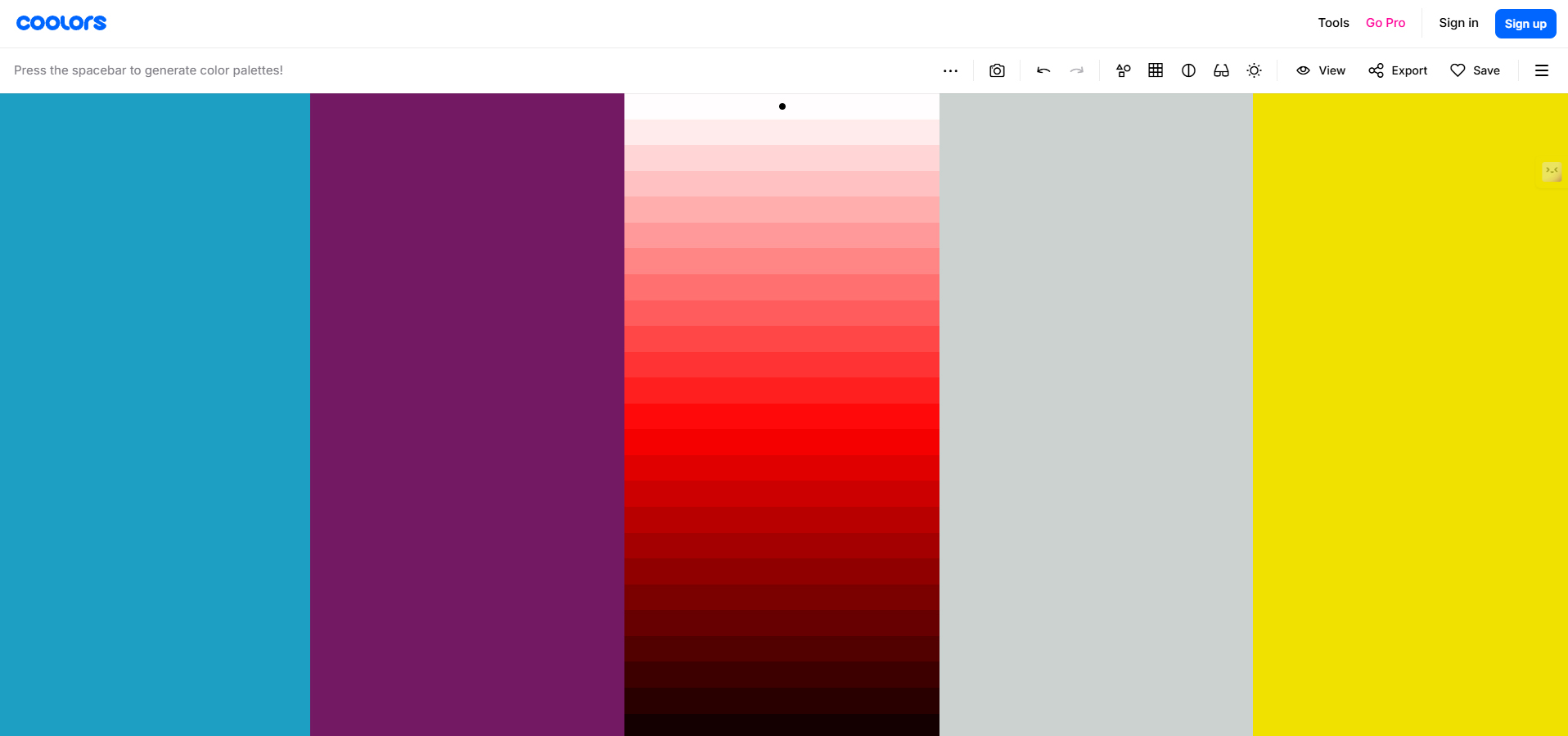

- Ahrefs Backlink Checker – 20.9M backlinks (Ahrefs data)
This is a backlink analysis tool that shows who’s linking to your website or a competitor’s site. It helps evaluate the backlink profile, identifies referring domains, and assesses link quality, which is key to refining your SEO strategy.
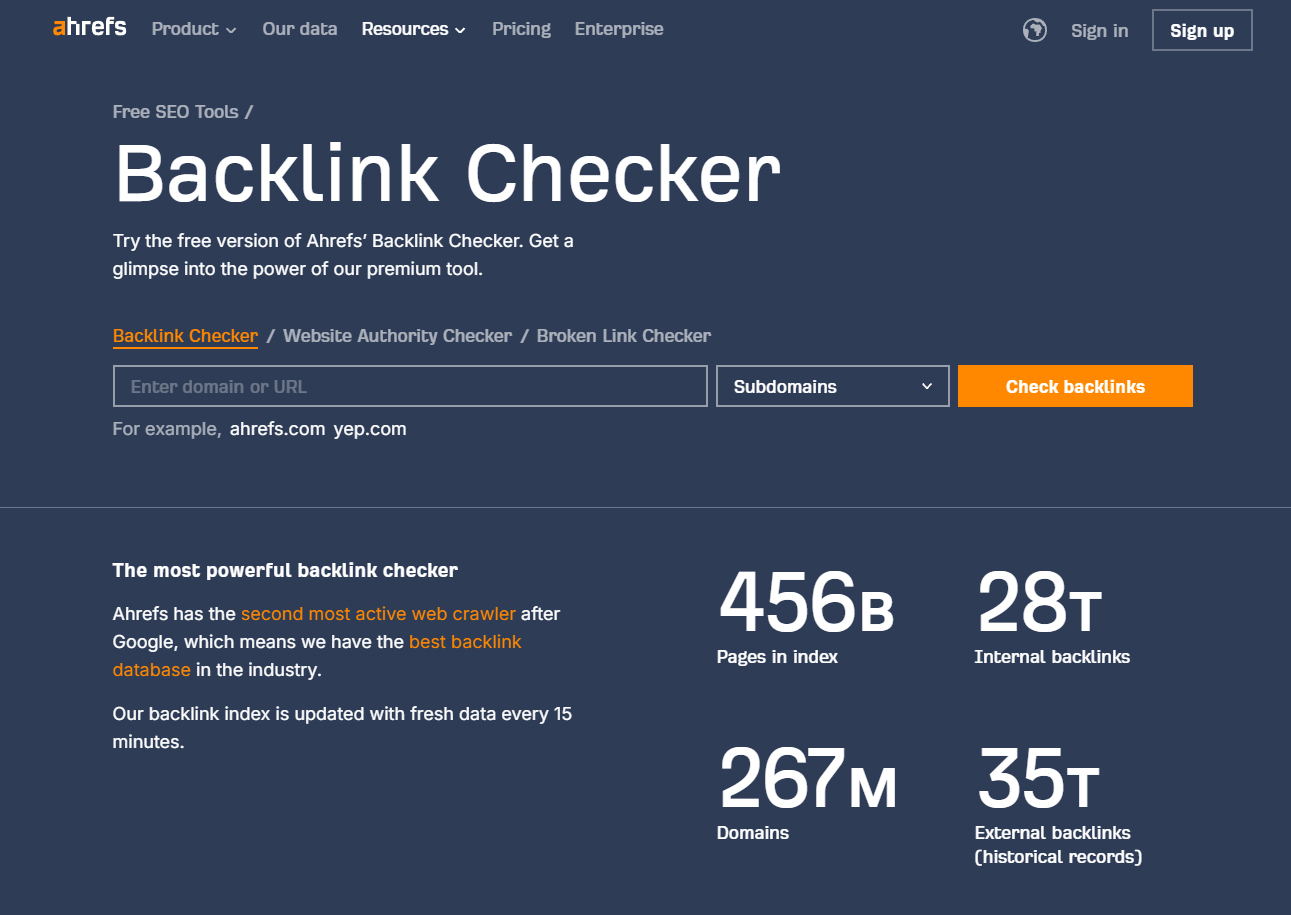

- Adobe Shortcut Mapper – 82 backlinks (Ahrefs data)
This interactive tool visualizes keyboard shortcuts for Adobe programs, such as Photoshop, Illustrator, and InDesign. It helps users learn shortcuts faster and work more efficiently within these applications.
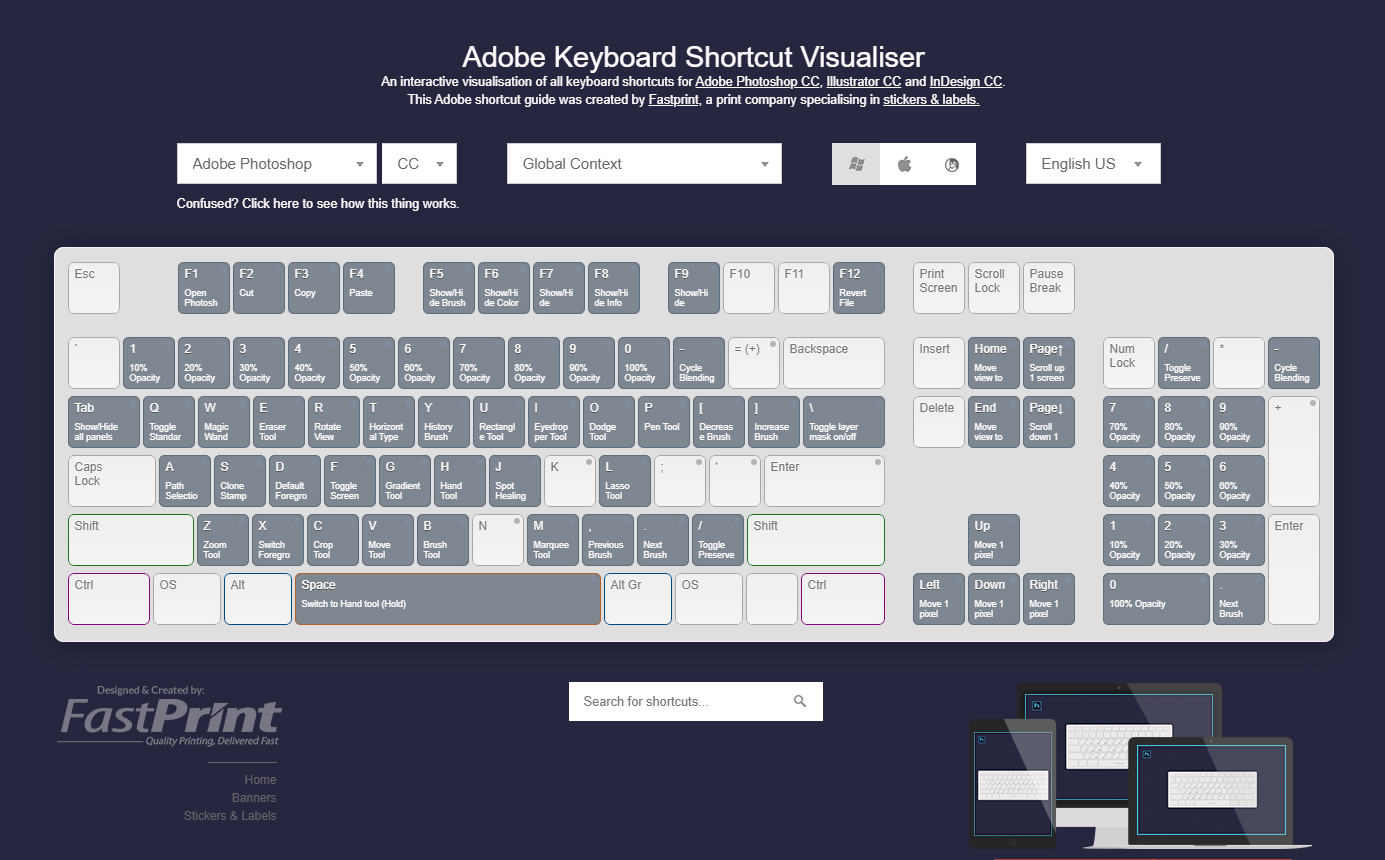

At LinkBuilder.com, we've also made sure that our users have a handy tool to calculate the cost of backlinks.
Our Backlink Cost Calculator lets you estimate the price of crowd links, directory submissions, and profile backlinks.
With this tool, you can:
- Choose your promotion region (EN, NO EN, MIX).
- Select link type (dofollow, nofollow, or mix dofollow and nofollow).
- Set the number of links (the minimum order via the calculator is 20 links).
- Choose the delivery frequency (one-time or monthly).
- Place and pay for your order directly through the calculator.
Of course, the Backlink Cost Calculator isn’t the only way to order. You can always contact one of our managers for more details or place an order directly in your dashboard by providing all the required information.

How to Create Interactive Tools and Calculators That Attract Backlinks?
- Solve Real Problems
The best tools are always designed with user needs in mind. Research to understand the challenges your audience faces, and then create a tool that offers a practical solution.
- Keep It Simple and User-Friendly
Even if your tool handles complex calculations, the interface should be intuitive and easy to navigate. Users shouldn't have to figure out how it works; it should just work.
- Ensure Accuracy and Reliability
Errors in calculations or functionality can seriously damage trust. Make sure your tool runs smoothly, delivers accurate results, and is regularly maintained.
- Add Educational Value
Tools that not only solve a problem but also teach users something along the way are more likely to succeed. For example, a mortgage calculator could include brief explanations of how monthly payments are calculated.
- Optimize for SEO
Make sure your tool’s page is SEO-friendly. Use relevant keywords, add clear meta descriptions, and ensure the page loads quickly. Proper optimization helps in getting the maximum number of links from your infographic.
What Services Can be Used to Create Interactive Tools?
If you don’t have the resources to build a tool from scratch, you can use existing platforms:
- Google Sheets
Great for building simple calculators, like budget planners or currency converters. These can easily be embedded into a webpage.
- Calcapp
A no-code platform for creating interactive calculators without writing a single line of code.
- Thunkable
A tool for building mobile apps, which can be adapted to create interactive solutions.
- WordPress Plugins
Plugins like Calculated Fields Form allow you to build calculators and interactive forms directly on your website.
- No-Code Platforms
Tools like Bubble and Webflow let you build advanced interactive tools without coding knowledge.
Interactive tools and calculators do more than enhance the user experience; they’re powerful link-building assets. They solve real problems, increase engagement, and often go viral.
To build a successful tool, focus on understanding your audience’s needs, delivering accuracy and simplicity, and promoting it through educational resources, blogs, and social media. Thanks to modern no-code platforms, creating interactive tools is now more accessible than ever, even for businesses without technical teams.
In-Depth Guides and Educational Resources
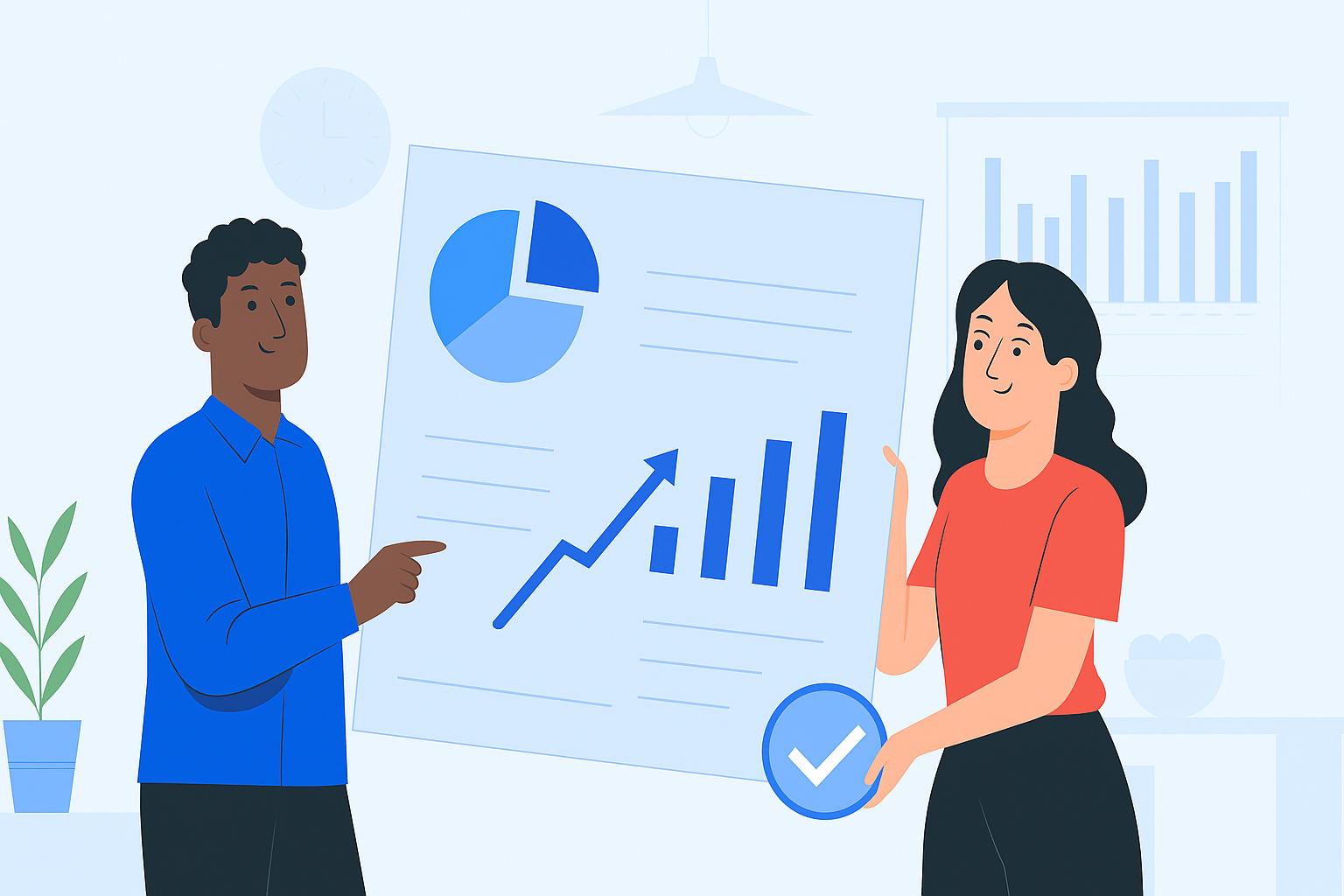
In-depth guides and educational resources are comprehensive materials that cover a specific topic from start to finish. They provide readers with everything they need to understand a subject, solve a problem, or learn a new skill.
These types of content often include step-by-step instructions, examples, expert tips, templates, and other practical tools, making them indispensable to the audience.
Benefits of In-Depth Guides and Educational Resources
- High Value for the Audience
These materials directly address real problems, making them valuable to a broad audience. As a result, they are more likely to be shared and recommended.
- Long-Term Relevance
Well-structured guides remain useful for years, especially when updated regularly. This makes them a consistent source of traffic and backlinks.
- Backlinks from Authoritative Sources
Bloggers, journalists, and industry experts frequently link to in-depth resources because they save time by providing all the necessary information in one place.
- Improved Search Rankings
High-quality guides tend to rank well for competitive keywords, which drives organic traffic and boosts your site’s visibility in search engines.
- Strengthens Brand Authority
Creating detailed, informative content positions your brand as a trusted expert in your niche. This builds trust with the audience and helps cultivate a positive reputation.
- Higher Audience Engagement
In-depth content naturally sparks more interactions, including comments, questions, and social media discussions, which strengthens the relationship with your audience.
- Content Versatility
These guides can be repurposed into various formats, such as webinars, eBooks, courses, or digital products, making them highly valuable and cost-effective.
- Attracting New Audiences
Well-written, shareable guides are often shared across social media, forums, and through referrals, helping you reach people who may not have been aware of your brand before.
- Reduced Bounce Rates
Since these resources contain a wealth of helpful information, users tend to stay on the page longer, which improves behavioral metrics and benefits SEO.
- Simplifies the Learning Process
For many users, such materials become a go-to resource for self-education, especially valuable in the era of online learning.
- Supports Your SEO Strategy
In-depth guides naturally include targeted keywords, internal links, and structured data that enhance indexation and search engine rankings.
- Reduces Customer Support Load
If your guide addresses common questions, it can help users find answers on their own, saving time and resources for your support team.
Examples of Successful Guides
- “Link Building For SEO: The Definitive Guide” by Backlinko
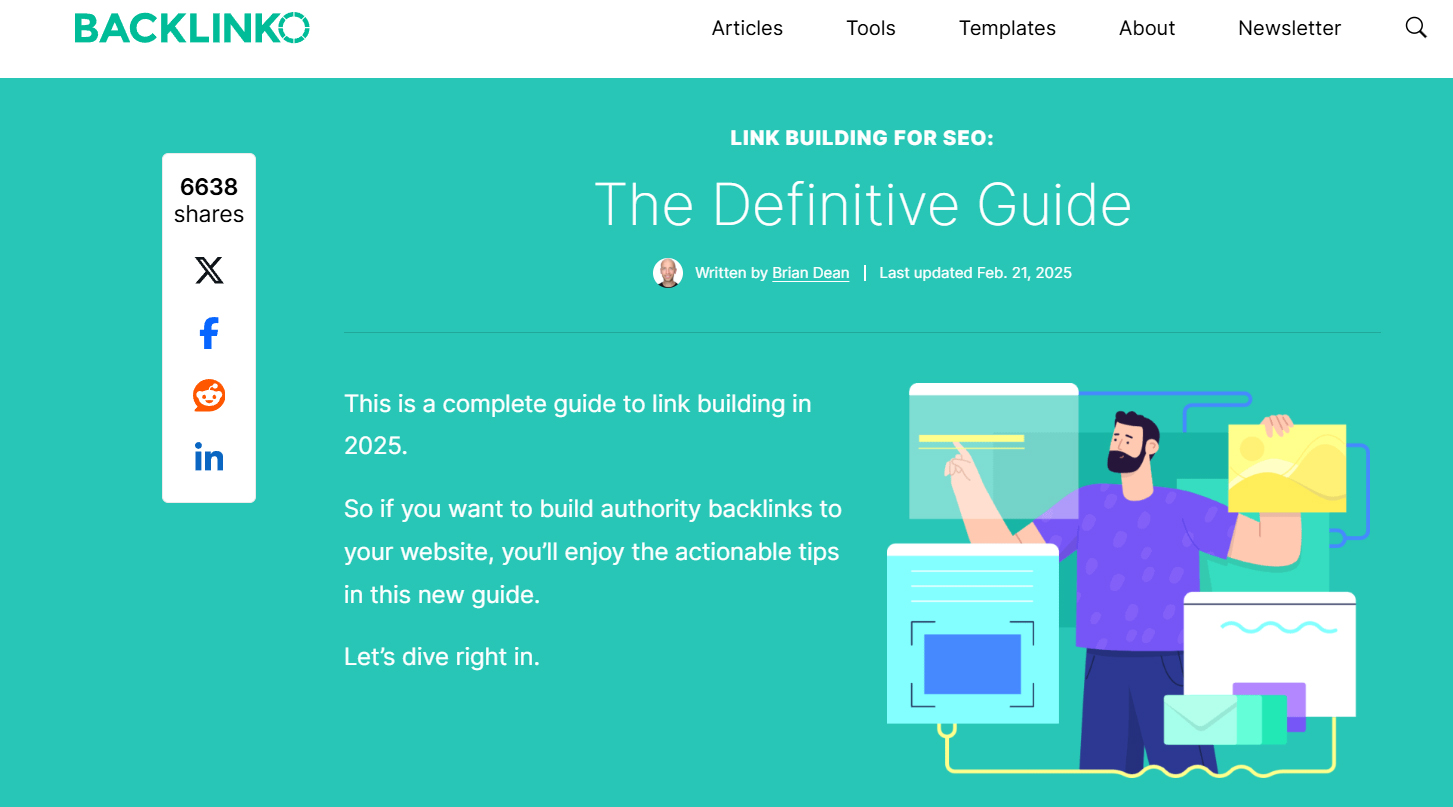
This comprehensive guide by Brian Dean covers every aspect of link building. It offers practical, actionable tips for earning high-authority backlinks to your site.Links: Over 1.7K referring domains (according to Ahrefs).

- “Web Accessibility: What It Is, Why It Matters, & How to Get It Right” by HubSpot
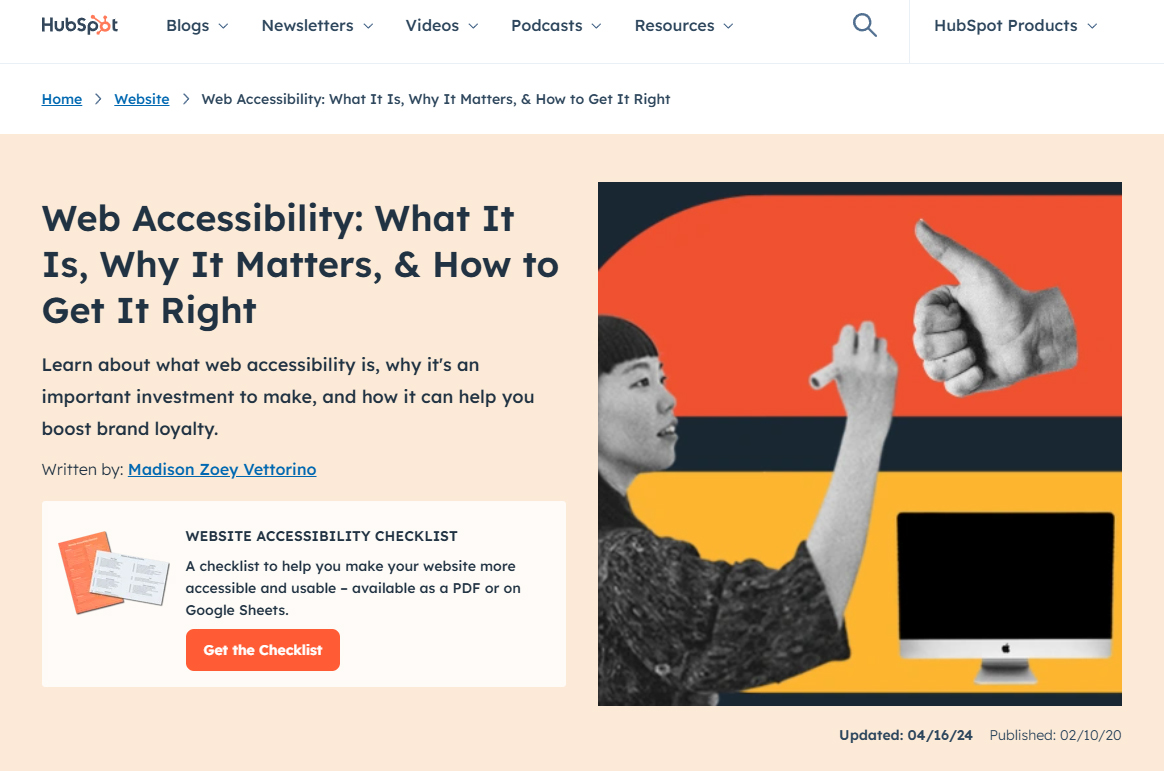
This guide explores all facets of web accessibility, including WCAG standards, testing tools, and practical tips for creating inclusive design. It has gained popularity among developers and designers.Links: 315 referring domains (according to Ahrefs).

- “The Ultimate Guide to Remote Work” by Zapier

Zapier, a company that works entirely remotely, has created a comprehensive guide to organizing remote work. It covers everything from finding remote work to managing distributed teams and staying productive.Links: Over 854 referring domains (according to Ahrefs).

At LinkBuilder.com, we’ve also created our own expert guide: How to Budget for Link Building Using Competitor Analysis Strategies.
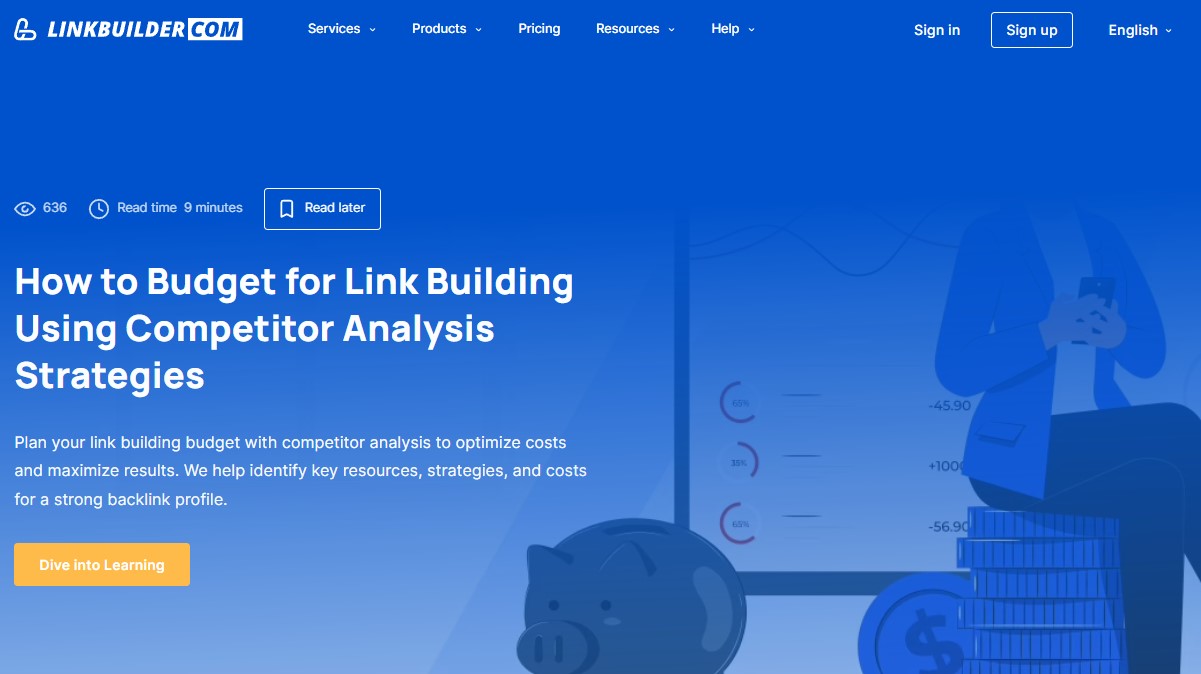
This guide walks you through analyzing the backlink profiles of your top competitors in a specific region and using that data to calculate your ideal link-building budget.
Additionally, we explain how to identify websites where you can purchase article placements with backlinks using LinkBuilder.com’s proprietary tools.
Try it out for yourself and see just how simple and effective it can be!
What Kinds of Backlinks Can In-Depth Guides Earn?
- Links from Bloggers and Journalists
Writers are constantly on the lookout for credible resources to cite. If your guide is comprehensive and well-structured, it becomes an ideal source to reference.
- Links from Educational Platforms
Educational institutions, online courses, and learning platforms often link to high-quality guides for supplemental reading.
- Links from Industry Experts
Thought leaders in your niche may recommend your guide as a trusted resource.
- Links from Social Media and Forums
Users frequently share helpful guides in online communities, which generates natural backlinks and expands your reach.
- Links from Government and Nonprofit Organizations
If your guide addresses socially significant topics (e.g., environment, health, education), it may be cited by public institutions or NGOs. These links are particularly valuable due to the high trust associated with such domains.
- Links from Media and News Outlets
Publications covering topics related to your guide may cite it as a data source or an example of high-quality content, mainly if it includes original research, statistics, or case studies.
- Links from Companies and Corporate Blogs
Businesses often look for training material for their employees or clients. If your guide serves that need, it could be featured in corporate blogs, knowledge bases, or internal resources.
- Links from International Sources
If your guide is translated into multiple languages or addresses global topics, it has the potential to attract backlinks from international websites, which can help expand your site's global visibility.
- Links from Content Aggregators
Platforms like Medium, Flipboard, or curated directories may include your guide in their collections of valuable resources, which can generate both backlinks and referral traffic.
- Links from Competitors
Yes, even your competitors may link to your guide if it’s genuinely helpful. For example, they might cite it as a reliable data source or reference a successful use case.
How to Create In-Depth Guides That Attract Backlinks?
- Choose a Relevant and In-Demand Topic
Research your audience’s queries and choose a topic that sparks interest. Use tools like Google Trends, AnswerThePublic, or Ahrefs for analysis.
- Make the Content Comprehensive
Your guide should be able to answer every possible question on the topic. Include step-by-step instructions, examples, infographics, videos, and other content formats.
- Update the Content Regularly
The world changes, and your guide should stay relevant. Regular updates help maintain audience interest and attract new links.
- Add Practical Value
Include templates, checklists, calculators, or other tools that readers can apply in their work.
- Optimize for SEO
Use keywords, create quality meta descriptions and titles to ensure your guide is easily found in search engines.
Which Tools Can You Use to Create and Promote Guides?
- Keyword Research Tools
- Ahrefs – for keyword and competitor analysis.
- Semrush – for idea generation and traffic analysis.
- Google Keyword Planner – for keyword selection.
- Content Creation Platforms
- Canva – for creating infographics and visuals.
- Notion – for structuring information.
- Google Docs – for collaborative writing.
- Promotion Tools
- BuzzSumo – for finding linkers and analyzing popular content.
- Mailchimp – for sending updates to subscribers.
- Hootsuite – for promoting on social media.
- Link Analysis Services
- Moz Link Explorer – for tracking backlinks.
- Hunter.io – for finding outreach contacts.
Strategies for Promoting Guides to Attract Links
- Stay Visible to Linkers
Regularly update and promote your guides. Use email campaigns, social media, and ads to remind your audience about the content.
- Borrow Links from Competitors
Find less effective guides on your topic and reach out to the websites that link to them. Offer your guide as a more up-to-date and valuable resource.
- Use Outreach
Run link-building campaigns by reaching out to bloggers, journalists, and experts. Do it subtly, emphasizing the value of your content.
- Create Viral Content
Add elements that are easy to share, such as infographics, videos, and interactive tools. This increases the chances of natural distribution.
In-depth guides and educational materials are not only powerful tools for educating your audience, but they’re also an effective way to attract backlinks.
To create a piece that stands out, focus on quality, relevance, and practical value.
Regularly update your content, promote it to your target audience, and use modern tools for analysis and optimization.
By following these recommendations, you can create a guide that becomes a valuable link-building asset for your website.
Listicles

Listicles are a type of content structured as a list of items connected by a common theme. Examples include “10 Best SEO Tools” or “7 Ways to Boost Productivity While Working Remotely.” This format is popular due to its simplicity and ability to convey key ideas to readers quickly and effectively.
Listicles are often used in blogs, media outlets, and even academic materials. They are ideal for readers seeking specific recommendations or solutions without having to dive into long-form content. This makes them appealing both to readers and website owners looking to share helpful information. For those looking for fresh link ideas, listicles can be a great source of inspiration.
Benefits of Listicles
- High Engagement
Readers appreciate listicles for their clear structure and ease of consumption. This format allows users to quickly find what they need, which is especially important in the age of short attention spans.
- Viral Potential
Well-crafted listicles are frequently shared on social media and other platforms, increasing their reach and bringing new visitors to the site.
- Natural Link Attraction
If your list includes products, services, or resources from other companies, there’s a good chance they’ll share it with their audience by linking to your article.
- Improved SEO
Listicles often rank higher in search results, especially when they target keywords like “best [category]” or “top 10 [topic].” This makes them a valuable asset for SEO strategy.
- Versatility and Adaptability
Listicles can be easily repurposed into other formats, such as infographics, videos, presentations, or even podcasts. This allows you to use the same content across multiple platforms, increasing its reach and potential for link building.
Examples of Successful Listicles
- “25 Most Influential Creators of 2024” by Rolling Stone
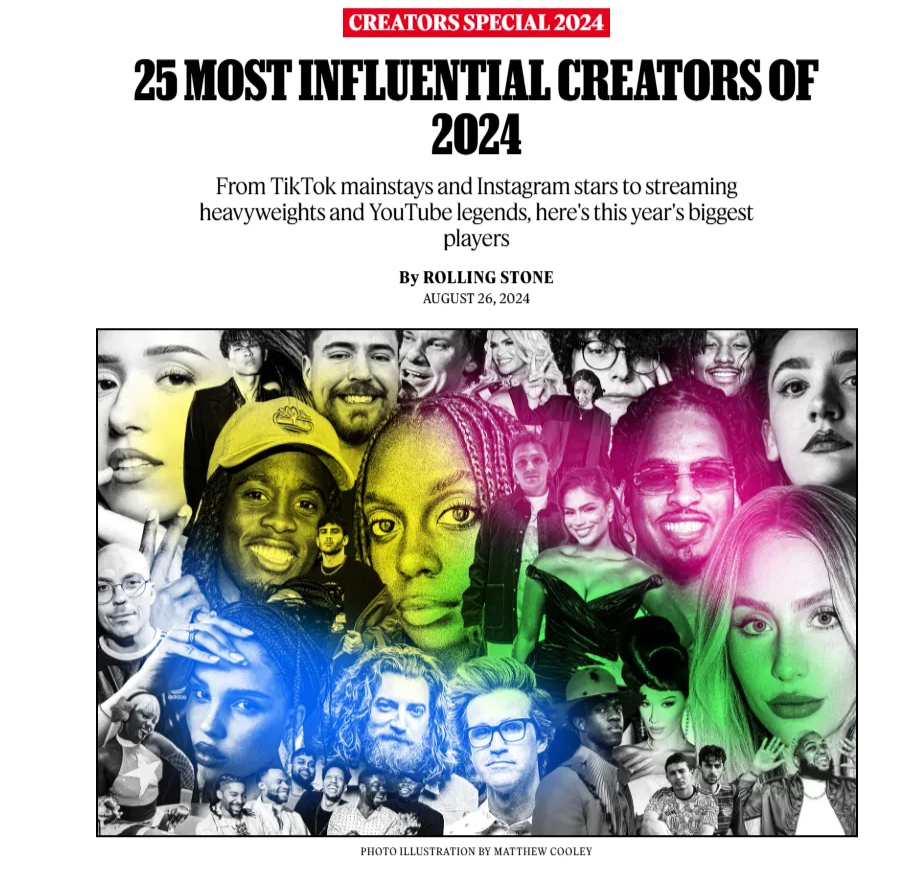
This list gained popularity by featuring well-known personalities and influencers.Why it works: A mix of trending names and a timely topic.
Links: 173 referring domains (Ahrefs data).

- “Top 100 Tools for Learning” by Jane Hart
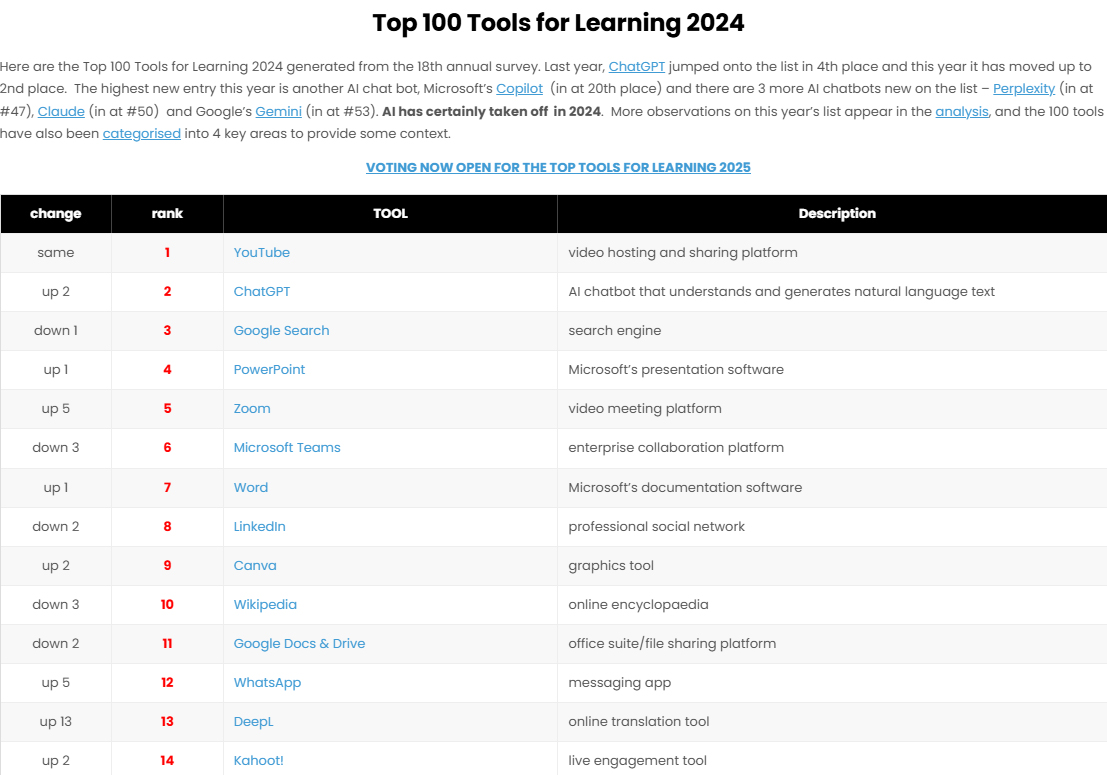
This annual list, compiled by learning expert Jane Hart, has become a benchmark for professionals in education and corporate training.Why it works: Author authority, yearly updates, and practical value for readers.
Links: Over 377 referring domains (Ahrefs data).

- “The 50 Best Movies on Netflix Right Now” by Vulture
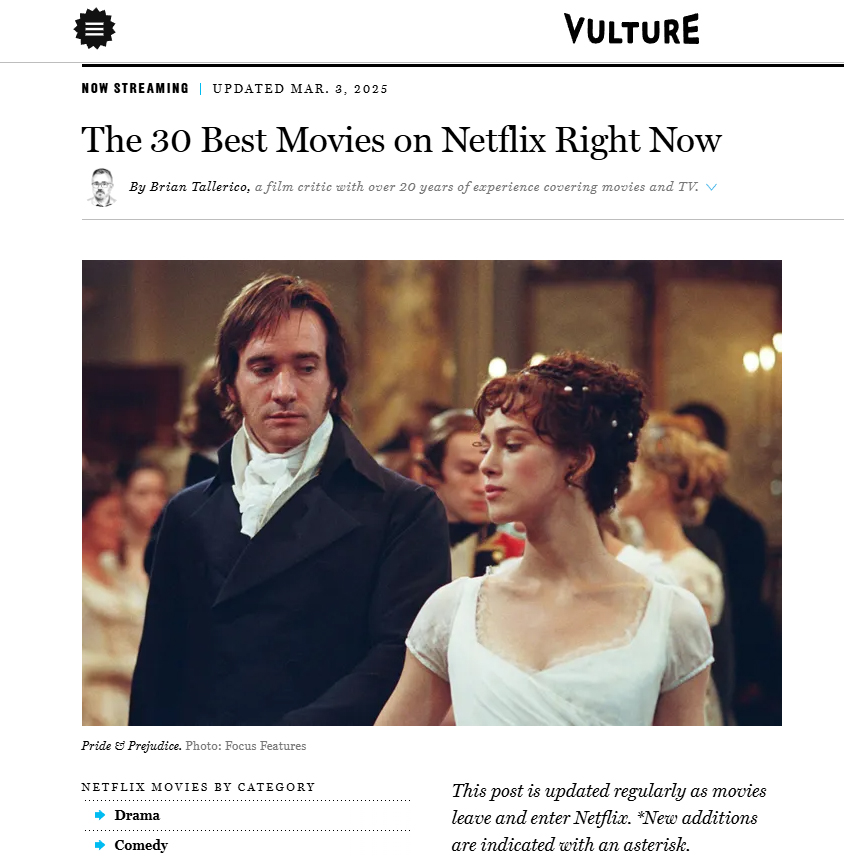
Entertainment outlet Vulture regularly updates its lists of top movies and shows on Netflix. These articles generate significant traffic, as Netflix remains one of the most popular streaming platforms.Why it works: Relevance, frequent updates, and user convenience.
Links: Over 198 referring domains (Ahrefs data).

We’ve published our own listicles that are especially useful for those involved in link building:
- Top 10 Best Forum Posting Platforms
- Where to Buy Permanent Backlinks fot SEO
- Top 7 Best Link Submission Platforms
What Types of Links Can You Get from Listicles?
- Links from Featured Brands
If you include a product or service in your list, the company behind it may share your content to gain visibility for their brand.
- Referral Links
Affiliate programs or referral links can be incorporated into your list if you recommend products or services available for purchase.
- Organic Links
High-quality listicles often become a source of backlinks from other websites that reference your content as an authoritative source.
- Social Signals
While social networks don’t pass direct link equity, they can significantly boost the visibility of your content, leading to natural link acquisition.
How to Create Listicles That Attract Links
- Choose Timely and Popular Topics
Research what your target audience is searching for. Use tools like Google Trends, AnswerThePublic, or Keyword Planner to identify trending topics.
- Make Your Lists Comprehensive
Your list should be as thorough and helpful as possible. For example, instead of “5 Best SEO Tools,” go for “25 Best SEO Tools in 2025.”
- Add Unique Value
Don’t just list products or services, share your experience using them. This builds trust and makes your content more link-worthy.
- Follow EEAT Principles
Google favors content that demonstrates Experience, Expertise, Authoritativeness, and Trustworthiness (EEAT). Ensure your list meets these standards.
- Optimize for SEO
Include relevant keywords in the title, subheadings, and body text. Add a meta description and optimize your images to improve visibility in search results.
Tools to Create and Promote Link-Worthy Listicles
- Ahrefs or Semrush
Use these tools to research keywords, analyze competitors, and track backlinks to your content.
- Canva
Design visually appealing graphics for your list to boost its shareability and viral potential.
- BuzzSumo
This tool helps you discover trending topics and understand what content performs best in your niche.
- Google Analytics
Track your listicle’s performance, how much traffic it attracts, which pages are most popular, and where your backlinks are coming from.
- HARO (Help a Reporter Out)
Use this platform to pitch your listicle to journalists and bloggers looking for expert sources for their articles.
Listicles are more than just a convenient content format; they’re a powerful tool for attracting backlinks and improving SEO.
To create a listicle that captures attention and earns links, it’s essential to focus on timely topics, provide unique value, and optimize your content for search engines.
Leverage the available tools and platforms to maximize the impact of your efforts. Remember, high-quality content remains your most important asset in the quest for links and audience engagement.
Original Research and Case Studies

Original research and practical case studies are powerful tools for generating link-worthy content and establishing your site’s authority.
Original research is based on data that has been collected and analyzed. It may include statistics, experiments, surveys, or trend analysis. For example, a study on which types of content perform best on social media, or an analysis of factors influencing search engine rankings.
Case studies showcase how specific strategies, tools, or approaches are applied in real-world scenarios. For instance, a case showing how a company increased sales by 30% through SEO, or an example of a successful advertising campaign.
Both types of content are valuable because they offer unique insights and practical takeaways that appeal to a broad audience.
Benefits of Original Research and Case Studies
- Uniqueness
Original research provides data that can't be found elsewhere. This makes it a valuable resource for backlinks.
- Authority
Data-driven content strengthens your credibility in the eyes of both your audience and search engines.
- High Link Potential
Other websites often reference research and case studies as authoritative sources of information.
- Practical Value
Case studies help readers understand how to apply theoretical concepts in real situations, making them both useful and in demand.
- Improved SEO
Research and case studies often rank higher in search results, especially when they answer popular queries.
What References Can You Get From Original Research and Case Studies?
- Links from Authoritative Websites: Media outlets, blogs, and industry publications frequently link to research to support their own articles with data.
- Links from Competitors: Even competitors may link to your content if it offers unique insights they haven’t covered.
- Links from Educational Resources: Universities, online courses, and educational platforms often use research and case studies as learning materials.
- Links from Social Media: Although social media doesn’t pass direct link equity, mentions across platforms can drive traffic and indirectly benefit your SEO.
How to Create Original Research and Case Studies That Attract Backlinks?
- Choose a relevant topic: Your research should address a real problem or answer a question your audience cares about. For example: “Which types of content drive the most traffic?” or “How have consumer habits changed over the past year?”
- Collect unique data: Use internal analytics, run surveys, or analyze publicly available data from a new angle. The uniqueness of your data is key to attracting backlinks.
- Present the results in an accessible format: Visualize your findings using charts, graphs, and infographics. Clear visuals make complex data easier to digest.
- Make your takeaways actionable: Include a section like “How to Apply These Findings.” This increases the value of your content and makes it more link-worthy.
- Promote your research: Reach out to bloggers, journalists, and industry experts who may find your research useful. Offer them your study as a reliable source for their content.
What Services Can be Used to Create Research?
- Google Forms and Typeform – for creating surveys and collecting data.
- Google Analytics and SimilarWeb – for analyzing traffic and user behavior.
- Tableau and Power BI – for data visualization.
- Ahrefs and Semrush – for keyword and competitor research.
- Canva and Piktochart – for building infographics and visual content.
Examples of Successful Research and Case Studies
- HubSpot's “State of Inbound Marketing Report” study on the state of inbound marketing
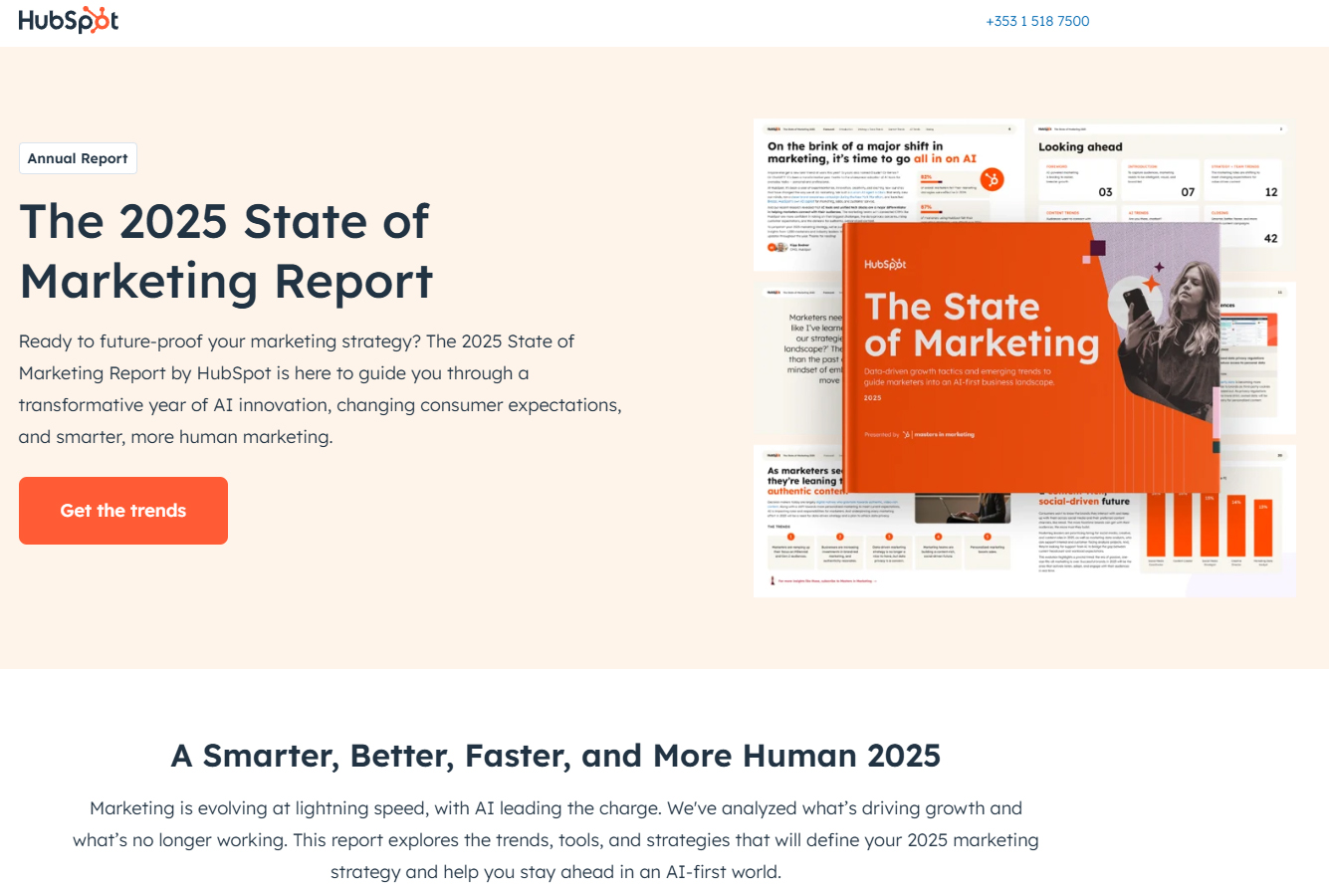
HubSpot publishes an annual State of Inbound Marketing report that includes data on trends, the effectiveness of different channels and strategies, and marketers' preferences.- Why it works:
- Unique data collected from thousands of marketers worldwide.
- Actionable insights for optimizing marketing strategies.
- Evergreen value: updated every year and consistently linked to.
- Results: Thousands of backlinks from authoritative sites like Forbes, Entrepreneur, and other major publications.

- Why it works:
- Backlinko's study “Google's 200 Ranking Factors: The Complete List” about ranking factors in Google
Description: Brian Dean (Backlinko) has analyzed millions of pages to identify the key factors that influence your Google search rankings.
- Why it works:
- Unique data based on large-scale analysis.
- Clear conclusions that help SEOs improve rankings.
- Easy to digest: presented as lists and graphs.
- Results: Thousands of links from SEO blogs, educational websites, and media outlets.

- Why it works:
- Content Marketing Institute's study on content marketing trends, “B2B Content Marketing Benchmarks, Budgets, and Trends: Outlook for 2025 [Research]”
![Content Marketing Institute's B2B Content Marketing Benchmarks, Budgets, and Trends: Outlook for 2025 [Research] Content Marketing Institute's B2B Content Marketing Benchmarks, Budgets, and Trends: Outlook for 2025 [Research]](../../../storage/articles/images/Linkable Assets_047_ru.jpg)
CMI's annual report on trends in content marketing, based on surveys of marketers around the world.- Why it works:
- Original data marketers use for planning.
- Practical insights and strategic recommendations.
- Long-term value as a reference resource.
- Results: Thousands of backlinks from marketing blogs and news sites.
![Ahrefs Analysis of Content Marketing Institute's Content Marketing Trends Study "B2B Content Marketing Benchmarks, Budgets, and Trends: Outlook for 2025 [Research]" Ahrefs Analysis of Content Marketing Institute's Content Marketing Trends Study "B2B Content Marketing Benchmarks, Budgets, and Trends: Outlook for 2025 [Research]"](../../../storage/articles/images/Linkable Assets_048_ru.jpg)
- Why it works:
These examples show that successful research and case studies share a few key elements in common: unique data, relevance to the topic, practicality, and high-quality presentation. If you can create content that combines these elements, it will become a powerful link asset for your brand.
We've provided examples of 5 popular types of link assets that can become sources of backlinks from authoritative resources.
However, it is not limited to these 5 examples. You can also create the following link assets:
- Resource pages
- Videos and podcasts
- Ebooks
- Templates and checklists
- Webinars and online courses
- Expert reviews
- Awards and rankings
- Coined Terms
- Beginner's Guides
- Trends and Statistics
How to Create Effective Linkable Assets
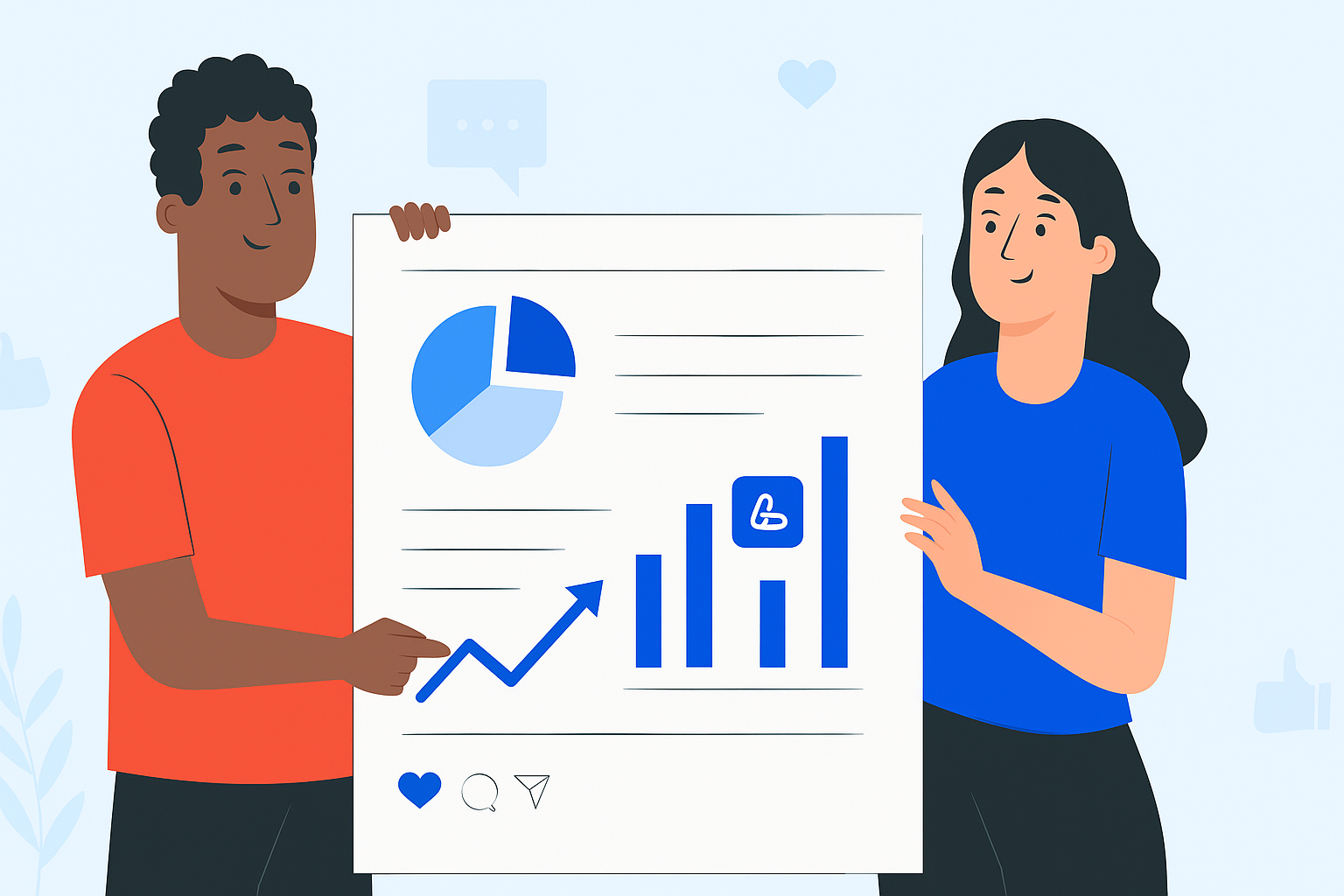
Let’s move from examples to execution.
Here’s how to generate content that provides real value, answers key questions, or solves problems in a way that inspires others to link to it.
How to create a successful link asset?
For your content to become a link asset, it must meet the following criteria:
- Be useful: It must solve specific user problems.
- Be unique: It needs to offer a fresh perspective or exclusive information.
- Have a quality design and structure: The visual layout plays a crucial role.
- Be relevant to your audience: Consider the interests and needs of your target audience.
- Have a promotion strategy: Even the best content will not bring results without proper promotion.
Let’s break these elements down further:
Understanding Audience Needs
Creating content that attracts backlinks is more than just an art; it’s a science rooted in understanding your audience. To make your content highly shareable and link-worthy, you need to go beyond demographics and uncover the deeper interests and motivations of your users.
Audience Analysis: Who is Your TA and What Does it Need?
The first step to successful content creation is researching your target audience (TA).
Who are these users? What are their demographics, interests, and behaviors? Answering these questions will help you create content that is not only useful but also engaging.
Tools for Audience Analysis:
- Google Analytics: This tool provides detailed information about your audience, including age, gender, geographic location, and interests. For example, if you notice that the majority of your audience is women aged 25-34 who are interested in fashion, this can be a starting point for creating themed content.
- Social media: Platforms like Facebook, Instagram, and LinkedIn offer built-in analytics tools to help you understand what types of content resonate most with your audience.
- Surveys and feedback: Sometimes, the easiest way to find out what your audience needs is to ask them directly. Use surveys on social media or your website to get valuable information.
Keyword Research: What Is Your Audience Searching For?
Keywords are not just an SEO tool; they are a window into your audience's thoughts. Analyzing search queries helps you understand what topics and issues your potential readers care about.
Keyword Research Tools:
- Google Keyword Planner: This tool allows you to determine the popularity of keywords and phrases, as well as assess the level of competition. For example, if you see that the query “how to choose the right diet” has a high search volume, this could be the basis for your next piece of content.
- Ahrefs or Semrush: These platforms offer advanced keyword analysis capabilities, including assessing difficulty and potential traffic. They also help you identify gaps in your competitors' content that you can fill.
Competitor Content Analysis: What’s Already Working?
Studying what works for your competitors can offer valuable insights and spark ideas for your own content strategy. Pay close attention to the types of assets that are earning the most backlinks and social engagement.
Tools for Content Analysis:
- BuzzSumo: This tool helps you analyze which articles and topics are most popular in your niche. For example, if you notice that how-to guides are consistently shared the most, you should focus on creating more practical, actionable content.
- Ahrefs Content Explorer: Use this tool to discover the most linked and shared articles around specific topics and examine the elements that contribute to their success.
Understanding Trends: What’s Relevant Right Now?
Creating content that aligns with current trends increases the chances that it will be noticed and appreciated. Use tools like Google Trends to track popular topics and queries in real time.
Example of using Google Trends: If you notice that interest in the topic of "eco-friendly lifestyle" is growing, this could be a signal to create content related to sustainability and environmental issues.
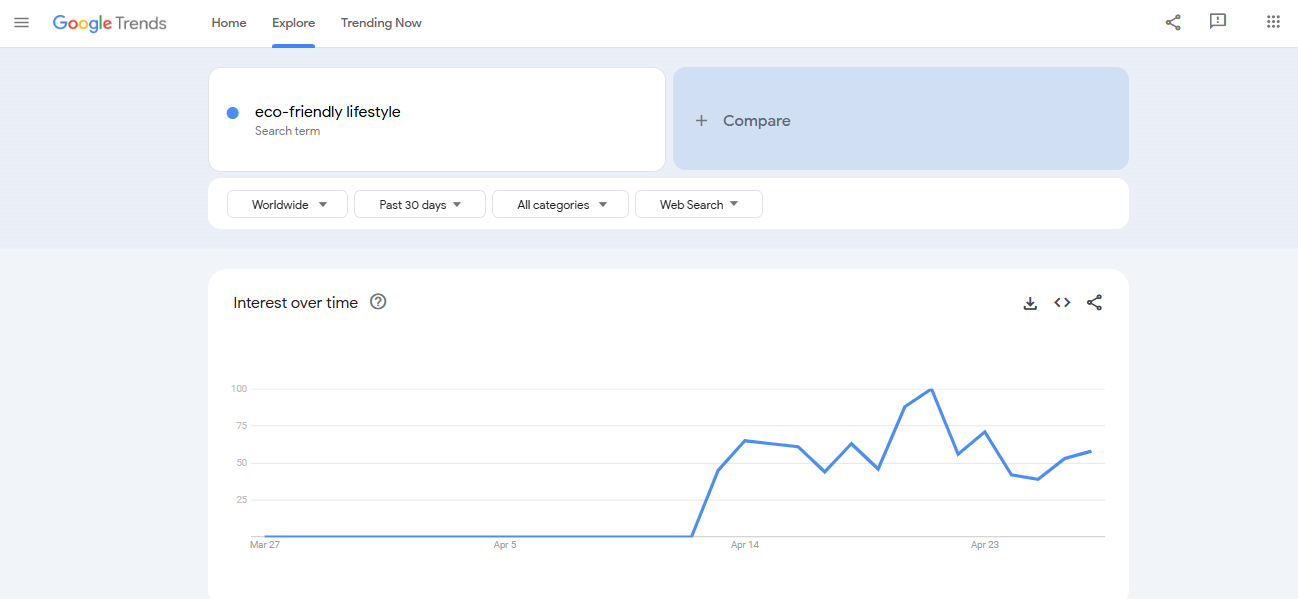
Adapting Content to Audience Needs
Once you’ve gathered all the necessary information, it’s crucial to adapt your content to the specific needs of your audience. This can include:
- Creating practical guides: If your audience is looking for solutions to specific problems, creating step-by-step instructions can be highly effective.
- Using visual content: Infographics, videos, and images can make your content more appealing and easier to absorb.
- Emotional impact: Content that evokes emotion, whether inspiration, surprise, or even humor, is more likely to be shared and linked to.
The Content Creation Process
Now let’s move directly to content creation. This process can be broken down into 3 stages:
- Collaborating with writers: Write a detailed brief for your copywriters, including key messages, structure, and content goals. Ensure that the text is unique, practical, and optimized for SEO.
- Working with designers: If your content includes visual elements, such as infographics, illustrations, or charts, provide designers with precise requirements. The visual component should be attractive and easy to understand.
- Involving developers: For interactive content (calculators, quizzes, maps), work closely with developers to ensure functionality and ease of use.
Ensuring Quality and Relevance
- Editing and proofreading: Review the text for grammar errors, stylistic consistency, and alignment with the brief.
- Fact-checking: Make sure all data, statistics, and quotes are accurate and up to date.
- Functionality testing: For interactive content, test all elements across different devices and browsers to ensure they work correctly.
- SEO optimization: Ensure the content is optimized for target keywords, includes meta tags, headings, and a structure that is friendly to search engines.
- Publishing on the website: Publish the content on your site, making sure it’s easy to access and properly formatted.
Promoting Valuable Link-Worthy Content
We’ve prepared a list of 9 popular methods for promoting linkable assets that can help improve visibility, traffic, and SEO performance.
1. SEO Optimization
- Using keywords in link anchors.
- Optimizing meta tags (title, description) on the pages being linked to.
- Internal linking to strengthen the link structure and improve site navigation.
2. Guest Posting
- Selecting authoritative websites in your niche.
- Creating high-quality, unique articles with naturally placed links to your site.
- Offering valuable content that will be useful to the partner site’s audience increasing the chances of publication.
3. Link Exchanges
- Finding partners among websites with similar topics and audiences for mutual link placements.
- Link exchanges should appear natural and comply with search engine guidelines.
4. Using Social Media
- Publishing links in profiles and posts.
- Promoting through groups, communities, and targeted advertising.
5. Working with Bloggers and Influencers
- Partnering with bloggers to mention your site.
- Organizing reviews and promotional integrations featuring your brand.
- Providing influencers with exclusive content or promo codes for their audience.
6. Press Releases
- Creating newsworthy topics that will be interesting to journalists and editors.
- Publishing press releases with links on specialized platforms.
- Getting mentions in the media and news outlets to boost your site’s authority.
7. Forums and Q&A Platforms
- Actively participating in discussions on forums (e.g., Reddit, Quora).
- Placing links in answers to questions, when appropriate and adding value for users.
- Building an expert image so your recommendations and links are trusted.
8. Directories and Review Platforms
- Registering in niche-specific directories.
- Posting reviews with links to your website.
- Directories and review platforms should be trustworthy and relevant to your niche.
9. Using Email Marketing
- Sending emails that highlight your valuable content.
- Segmenting your audience for more personalized campaigns.
- Including calls to action (CTAs) to increase link click-through rates.
Use a combination of these methods for maximum effect, but remember the importance of link quality and adhering to search engine guidelines.
Measuring the Success of Linkable Assets
To evaluate the effectiveness of linkable assets, it’s crucial to use key performance indicators (KPIs) that help you understand how successful your link-building and traffic efforts are.
Here are the key metrics to track:
1. Acquired Backlinks
- What to measure: The quantity and quality of new backlinks to your site.
- Why: Quality backlinks improve site authority and search engine rankings.
- Tools:
- Moz Link Explorer (assessing link authority).
- Semrush (backlink reports, competitor analysis).
- Ahrefs (backlink profile analysis, tracking new links).
- Google Search Console (basic link analysis).
2. Referral Traffic
- What to measure: The number of visitors coming to your site from other sources via links.
- Why: Indicates how effectively links are attracting targeted traffic.
- Tools:
- Google Analytics (traffic source reports).
- Matomo (Google Analytics alternative with a focus on privacy).
3. Social Shares and Mentions
- What to measure: The number of shares, likes, and mentions of your content on social media.
- Why: Social signals indirectly affect SEO and increase brand visibility.
- Tools:
- Hootsuite (social media activity monitoring).
- Brand24 (brand mention tracking).
- BuzzSumo (content popularity analysis).
- Sprout Social (social media management and analytics).
4. Referring Domain Diversity
- What to measure: The number of unique domains linking to your site.
- Why: Broad domain coverage increases search engines’ trust in your site.
- Tools:
- Ahrefs (referring domain reports).
- Semrush (backlink profile analysis).
- Majestic (Trust Flow and Citation Flow assessment).
5. Anchor Text (Anchor Profile)
- What to measure: Anchor text distribution in backlinks.
- Why: A balanced anchor profile helps avoid search engine penalties.
- Tools:
- Ahrefs (anchor text analysis).
- Semrush (anchor reports).
- Google Search Console (basic anchor analysis).
6. Changes in Site Rankings
- What to measure: Increases or decreases in site rankings for target keywords.
- Why: Shows how linkable assets influence SEO.
- Tools:
- Google Search Console (ranking tracking).
- Semrush (keyword position monitoring).
- Serpstat (SERP position change analysis).
- Ahrefs Rank Tracker (position tracking).
7. Conversions from Referral Traffic
- What to measure: The number of conversions (e.g., purchases, sign-ups) coming from referral sources.
- Why: Evaluates not just traffic quantity but quality.
- Tools:
- Google Analytics (goal setting and conversion tracking).
- Hotjar (user behavior analysis).
- Kissmetrics (in-depth conversion analysis).
By using these metrics, you can comprehensively evaluate the success of your linkable assets and optimize your strategy for better results.
Common Mistakes to Avoid
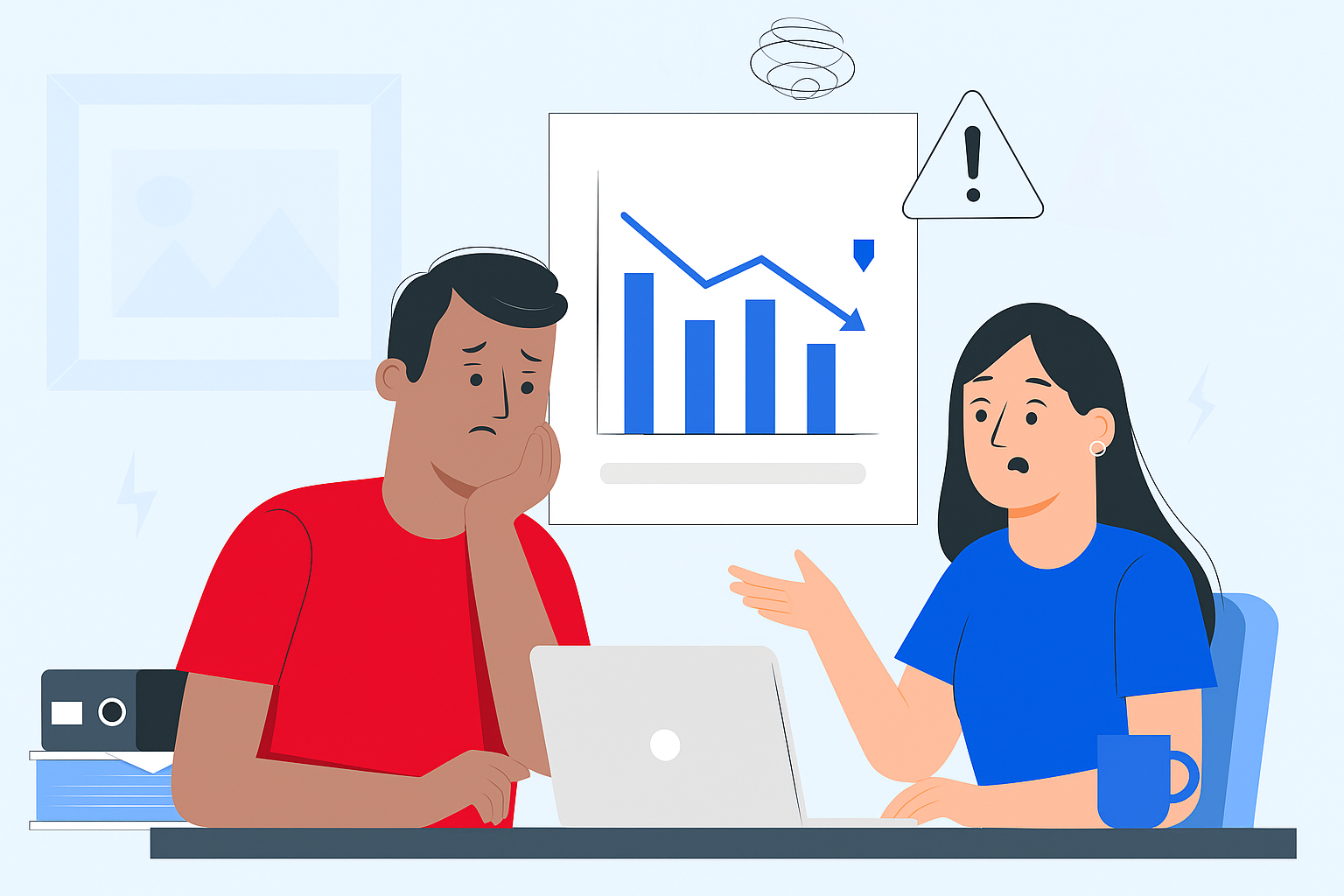
Creating high-quality linkable assets is a critical part of any successful SEO strategy. However, many marketers fall into common traps that can undermine the effectiveness of their efforts:
Focusing on Quantity Over Quality
One of the most common mistakes is prioritizing the number of linkable assets over their actual quality.
When quantity becomes the primary goal, content often ends up being shallow, unoriginal, and lacking genuine value for the audience. As a result, it fails to attract organic backlinks or generate genuine interest.
Ensuring the Depth and Value of Your Content
Focus on creating in-depth, helpful, and original content. Research your target audience’s pain points, answer their questions, and provide actionable solutions.
High-quality content not only attracts links but also builds credibility and trust.
Neglecting Promotion
Creating a great asset is only half the battle. Many marketers make the mistake of assuming that good content will naturally earn links on its own.
Without active promotion, even the best content can go unnoticed.
Importance of a Solid Promotional Strategy
Develop a solid outreach and promotion plan.
Leverage social media, email marketing, influencer partnerships, and blogger outreach to get your content in front of the right audience.
The more visibility your asset gains, the more likely it is to earn backlinks.
Failing to Update Content
Another frequent misstep is creating content and leaving it untouched.
Over time, information becomes outdated, and its relevance fades. This not only weakens its value for users but also reduces its potential to attract new links.
Keeping Your Assets Current and Relevant
Regularly update your content by adding new information, relevant data, and improving its structure.
This will not only help keep your audience interested but will also increase the chances that your content will remain relevant and continue to attract links.
Supercharge Your Link Building Campaigns with LinkBuilder.com

Creating linkable assets is one of the most potent ways to increase brand awareness, drive organic traffic, and boost your site’s authority.
However, success requires not only a deep understanding of your target audience but also the ability to create high-quality, practical, and unique content that is relevant and valuable to users.
How Exactly Can We Help Your Website Soar in the Search Engine Rankings?
LinkBuilder.com is your trusted partner in creating powerful link assets that drive increased traffic and improve search engine rankings.
We offer not just services, but real solutions that work today:
- Linkbuilding that improves search engine ranking positions
- We don't just look for links - we create a strategy that strengthens your link profile and increases search engine confidence.
- Crowd marketing for natural growth
- We place links on forums, blogs, directories, and social networks so that they look organic and attract real traffic.
- Guest posting and outreach are your key to authoritative links
- Get links from relevant and authoritative sites that impact your rankings.
- Niche Edits and Contextual Links for maximum relevance
- Incorporate links into existing content on topical sites so they look natural and bring value.
- Submissions for local and SEO diversity
- Place links in directories and on profiles to strengthen your link profile and improve local SEO.
- Profile Links for an extra boost
- Utilize forums, social media, and other platforms to place links that complement your strategy.
- White label linkbuilding - expand your services
- Offer white-label link building using our expertise and resources.
- Tools for fast and effective linkbuilding
- Use our Guest Post Selection Tool and High-Quality Free Backlink Sites List to quickly find the right sites for guest posts and free links. Using our unique tools, you will save time and improve the quality of your work.
Ready to get started on link assets that get results? Contact us today, and we'll help you take your content marketing to the next level!




